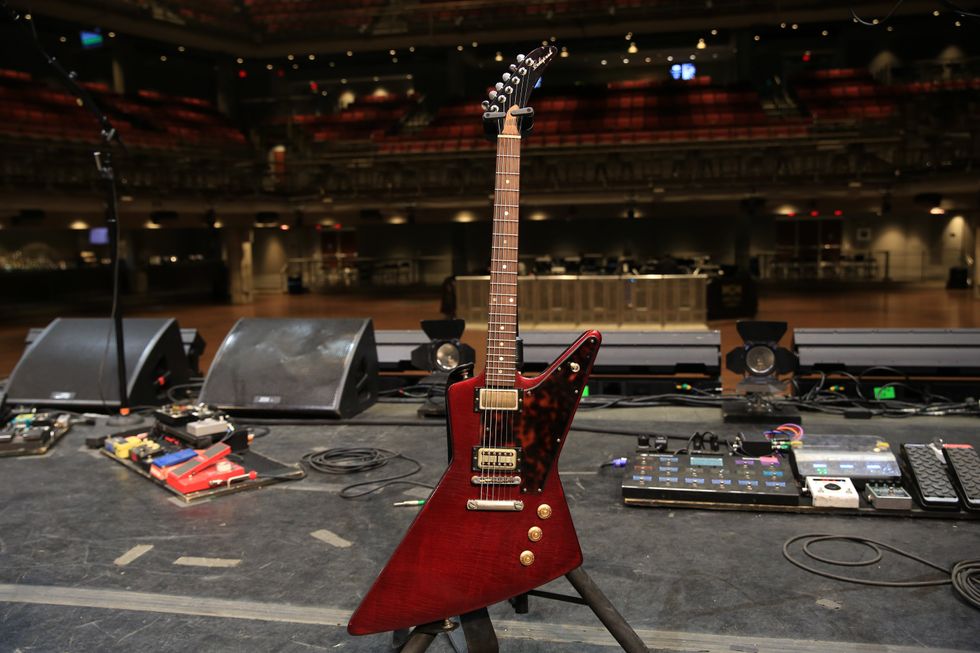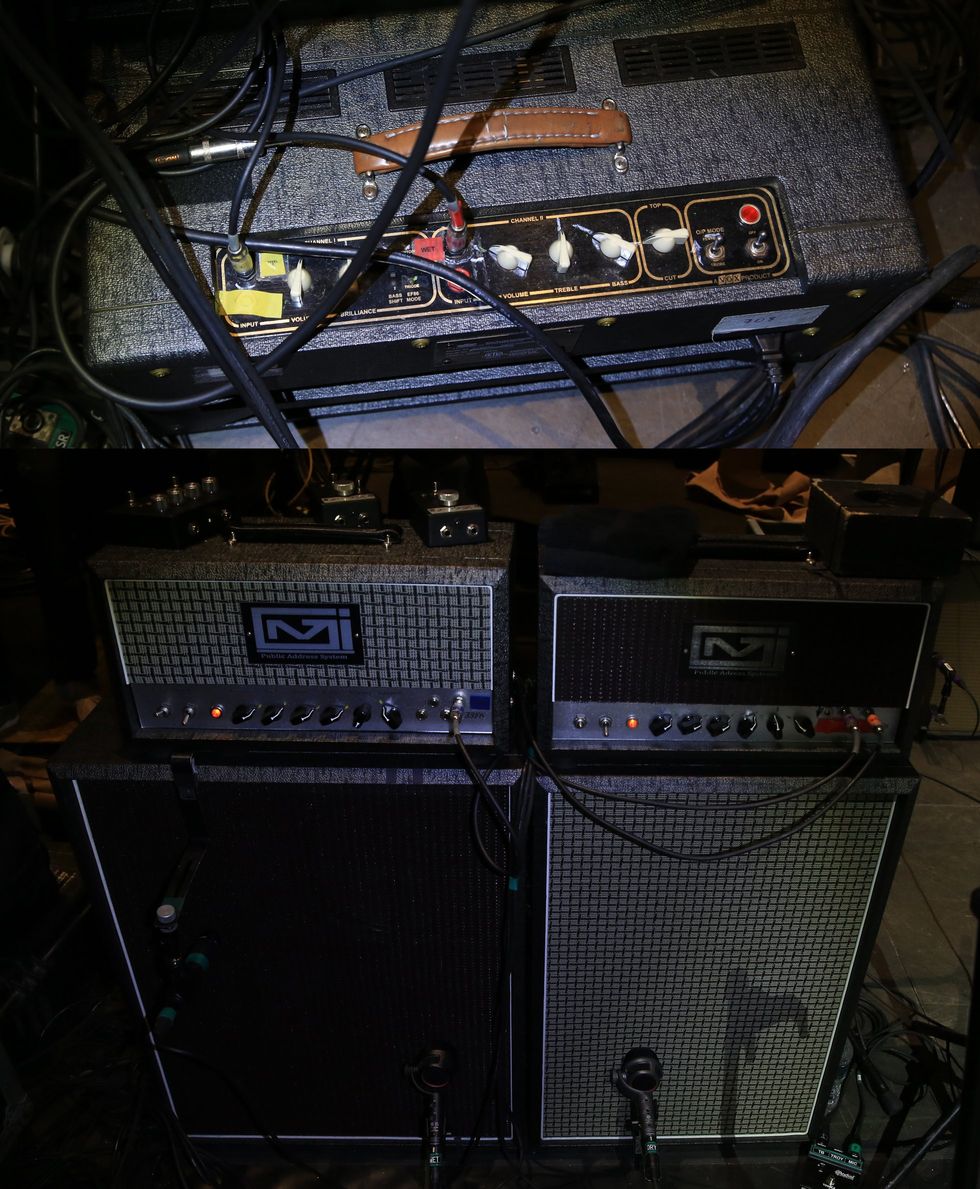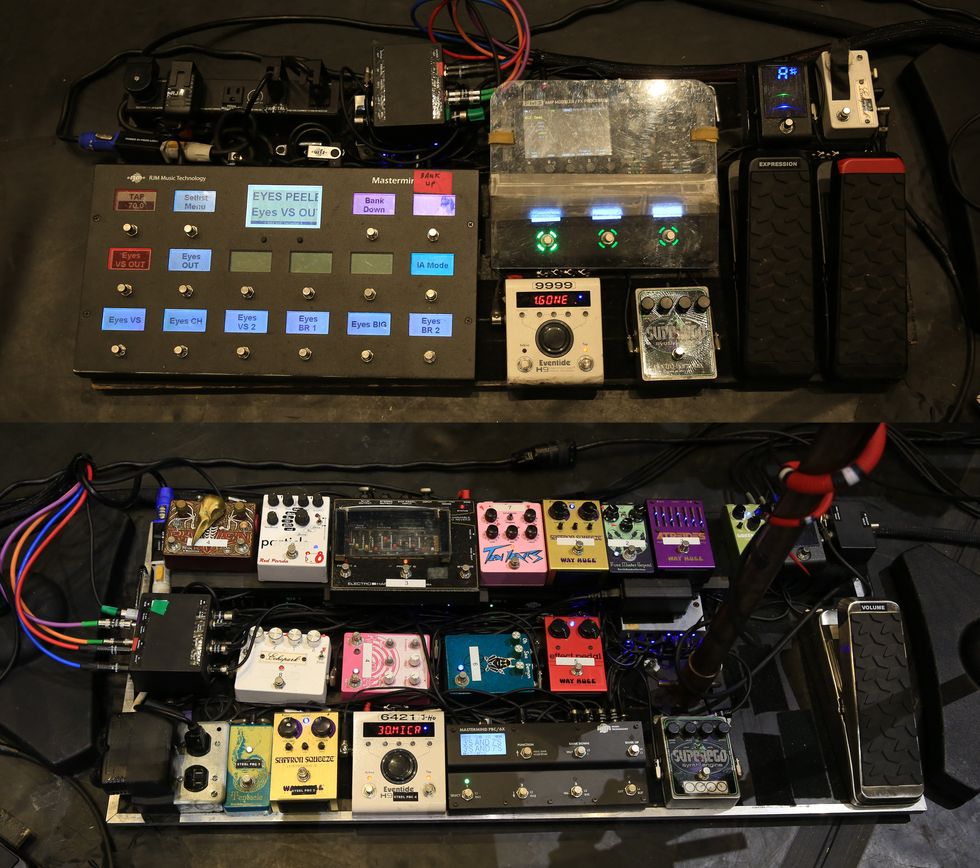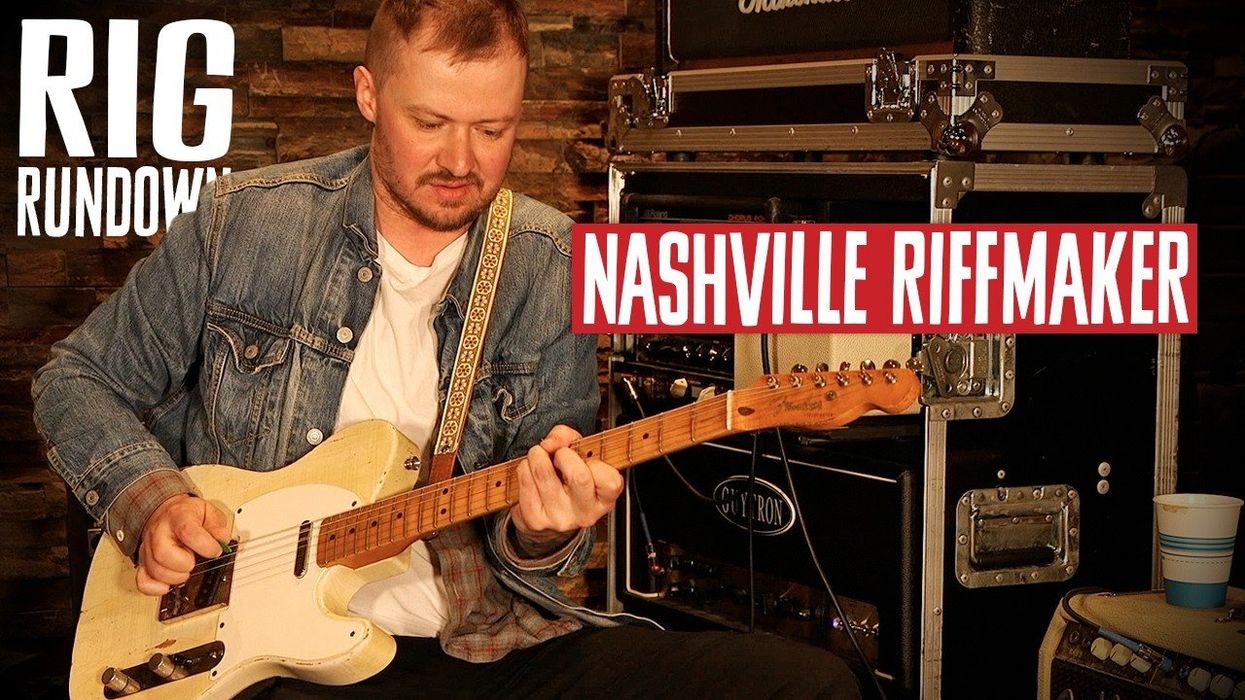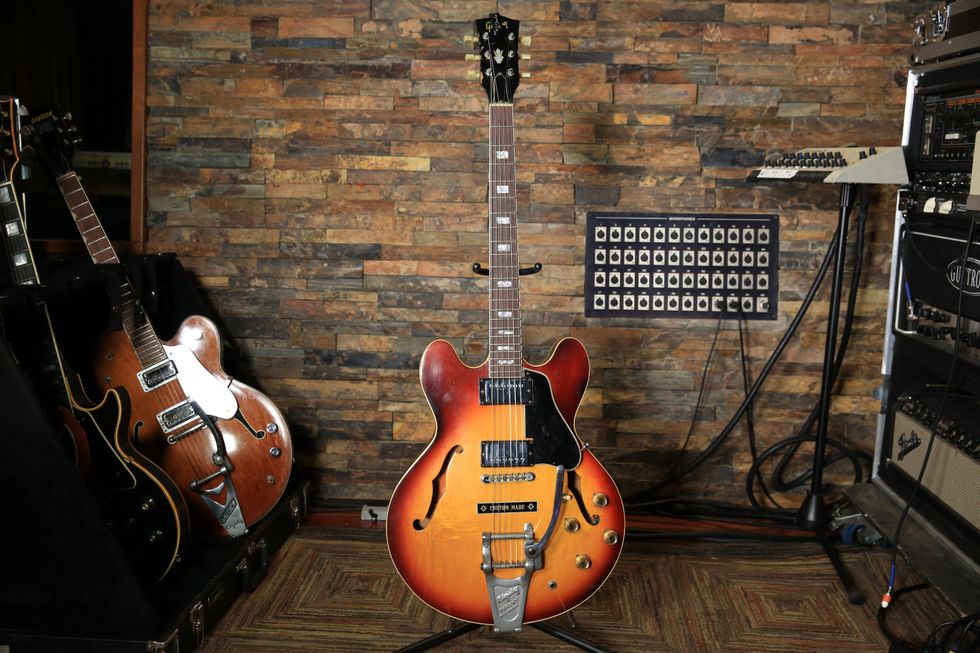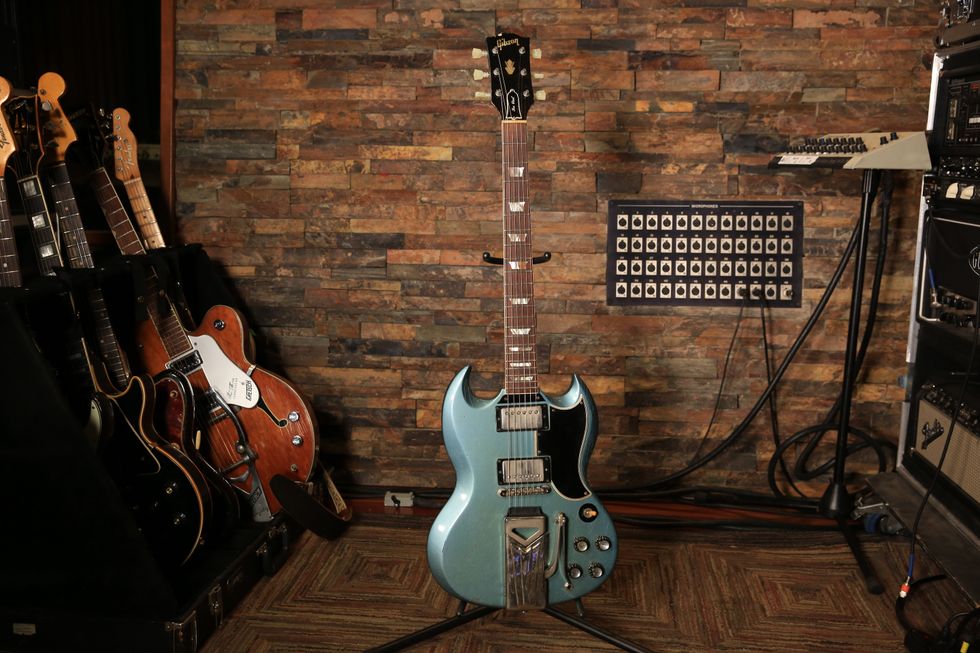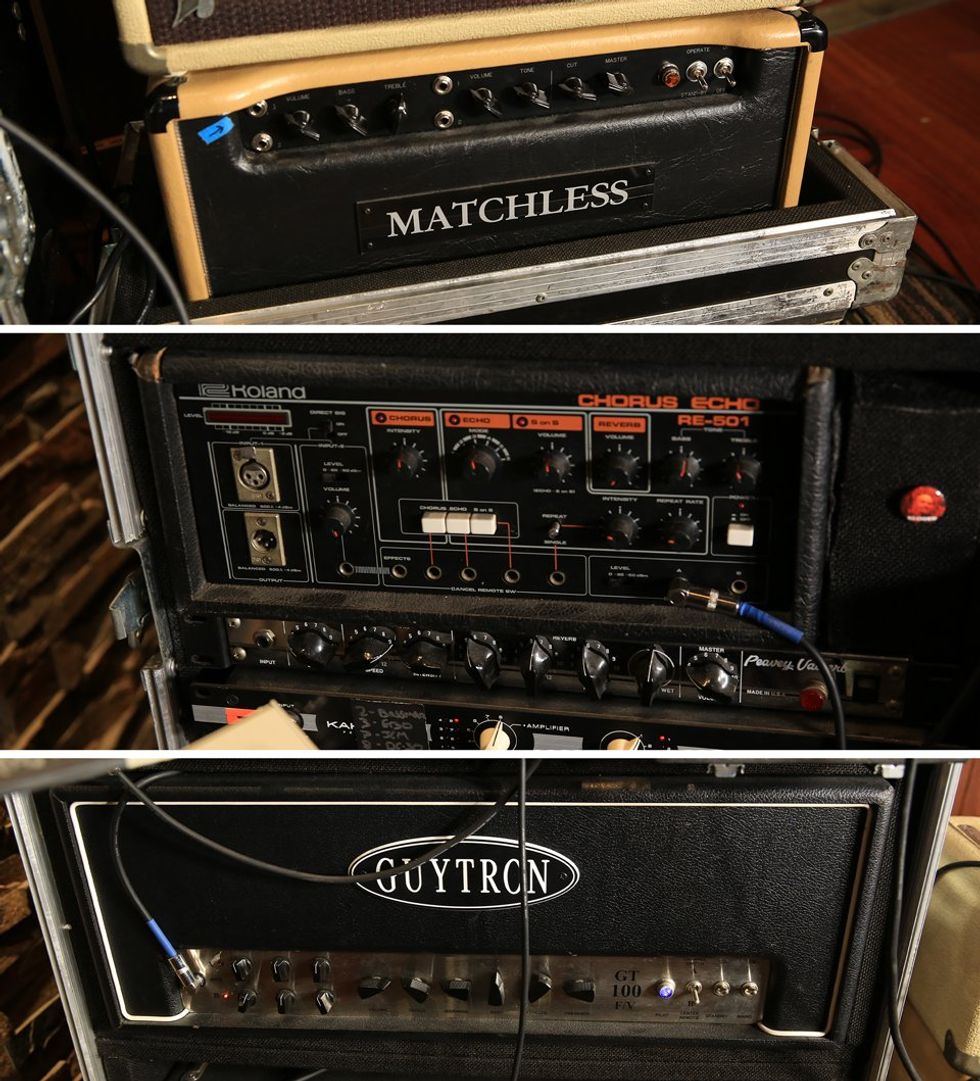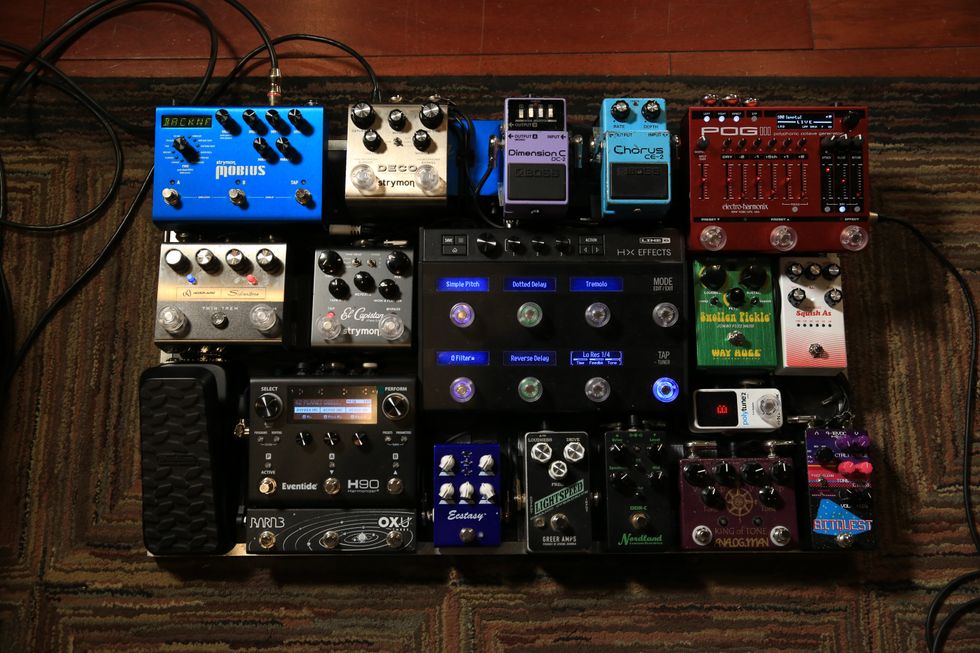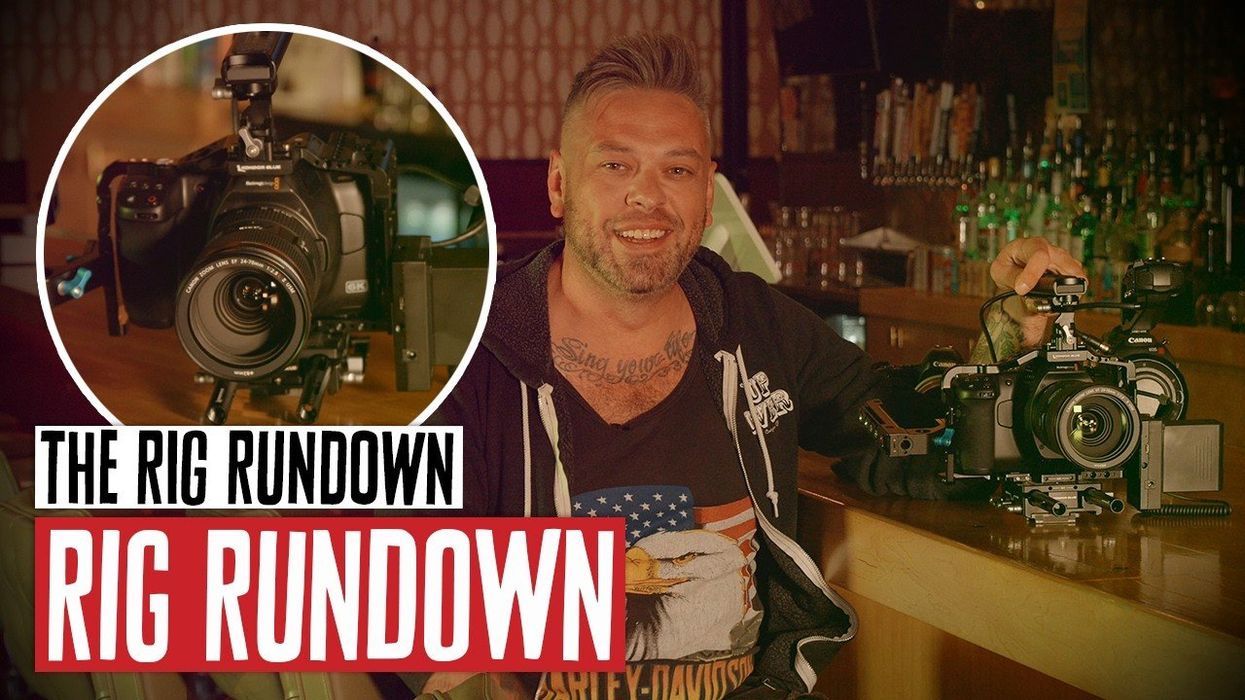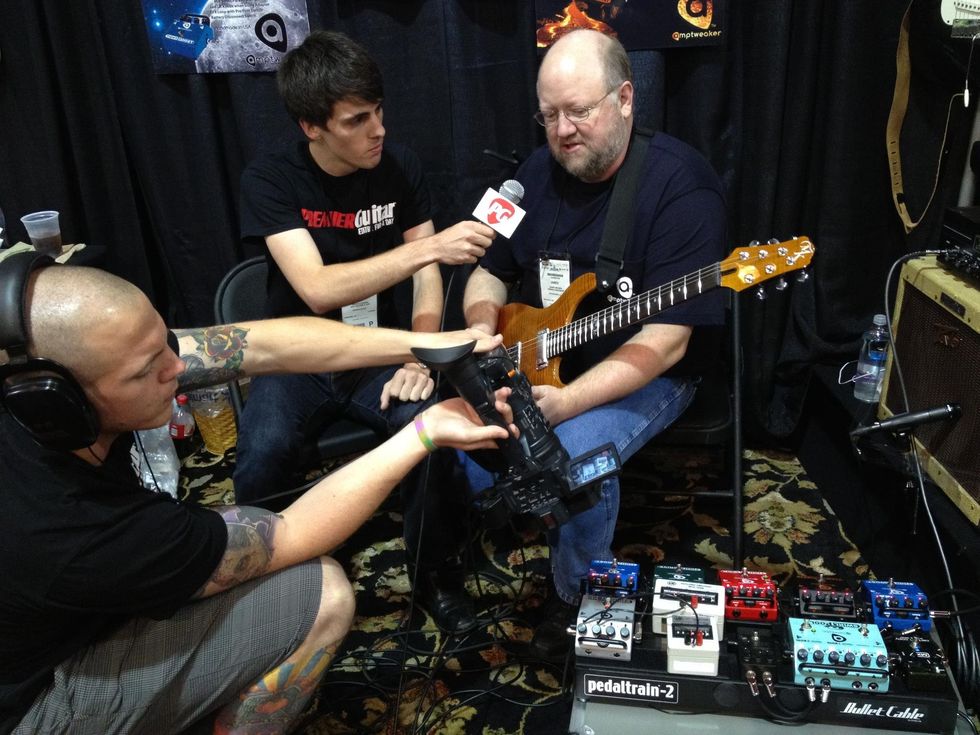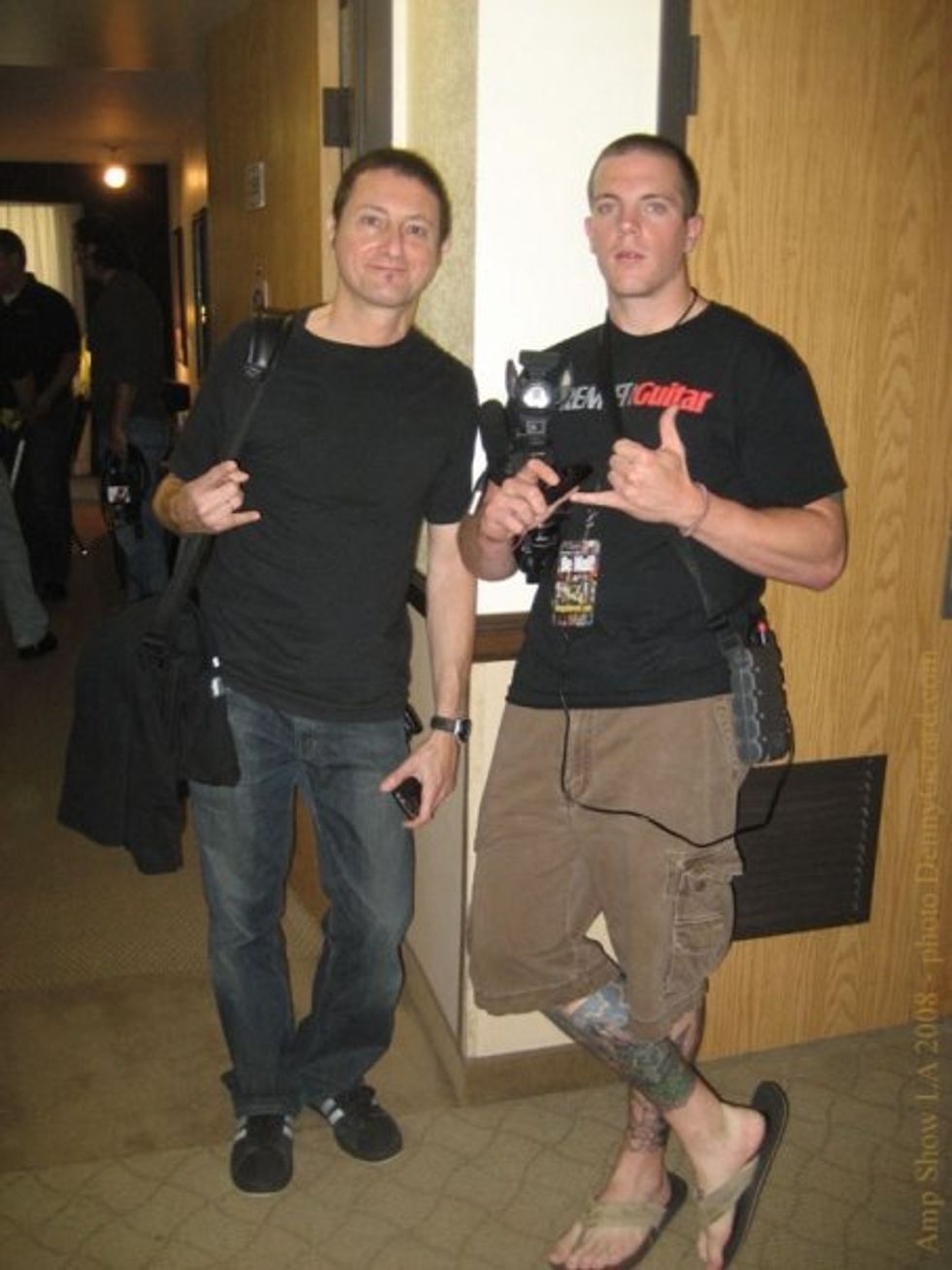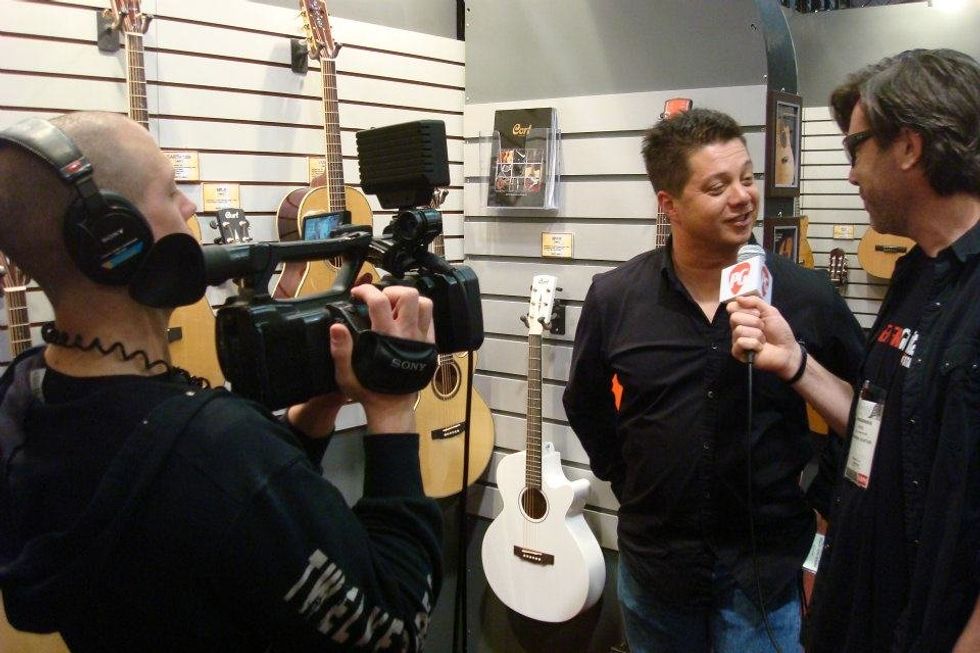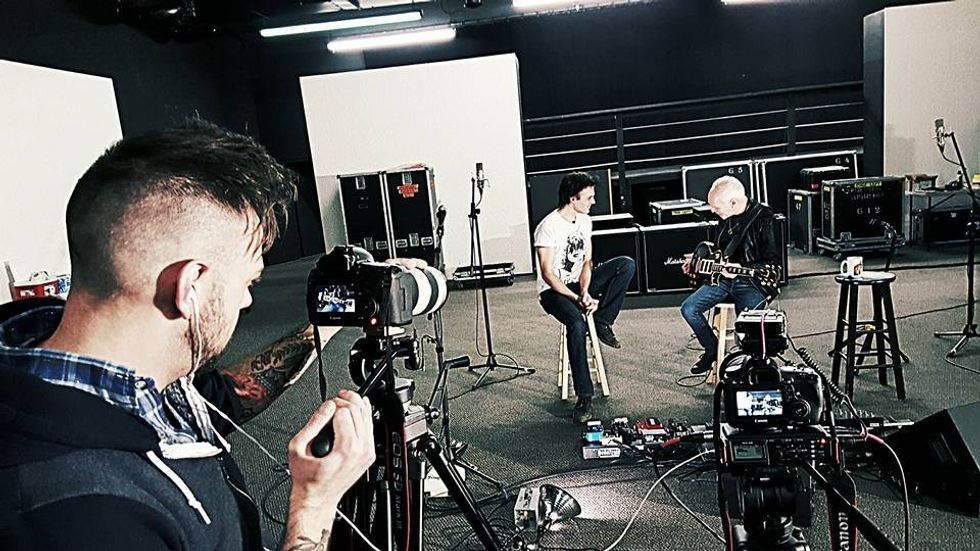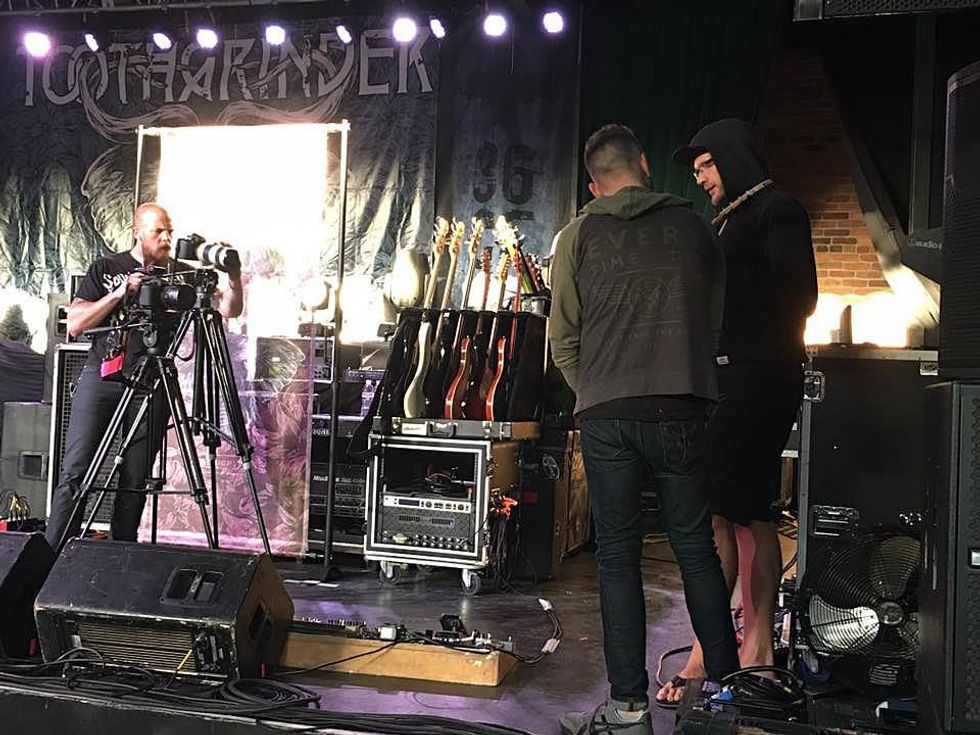The blues-rocker’s ursine tone comes courtesy of Tom Anderson, Orange, a handful of pedals, and pure personal grit. Plus—why she’s started playing in 432 Hz tuning.
We thought a grizzly bear had entered Nashville’s 3rd & Lindsley when Hannah Wicklund fired up her rig at soundcheck on March 20, when she headlined the club with her band the Steppin' Stones. Luckily, it was just the rude tone of her Tom Anderson Guitarworks Drop Top Classic model pumping through the sneer of her Orange head and cab, so … no carnage, but some echoes of classic Peter Green.
Although Wicklund—who was the subject of a PG profile in 2018—has U.S. and Canadian tour dates scheduled through early September, this was a rare stop in the South Carolina native’s adopted home town. She’s also been at work on a sequel to her 2018 album, Hannah Wicklund & the Steppin’ Stones, which she says is a coming-of-age story that will accent both her songwriting and her feminine side, although still showcase her 6-string chemistry. And speaking of chemistry, there’s an almost mystical conversation about tuning in 432 Hz in the Rundown that you won't want to miss.
Wicklund’s alchemical adventure began when she was 9 and her father gifted her an Anderson model. Thirteen years later, she’s still loyal to the brand, so that’s a good place for our Rundown to start.
Brought to you by D’Addario Nexxus 360 Rechargeable Tuner.
The Green Tiger
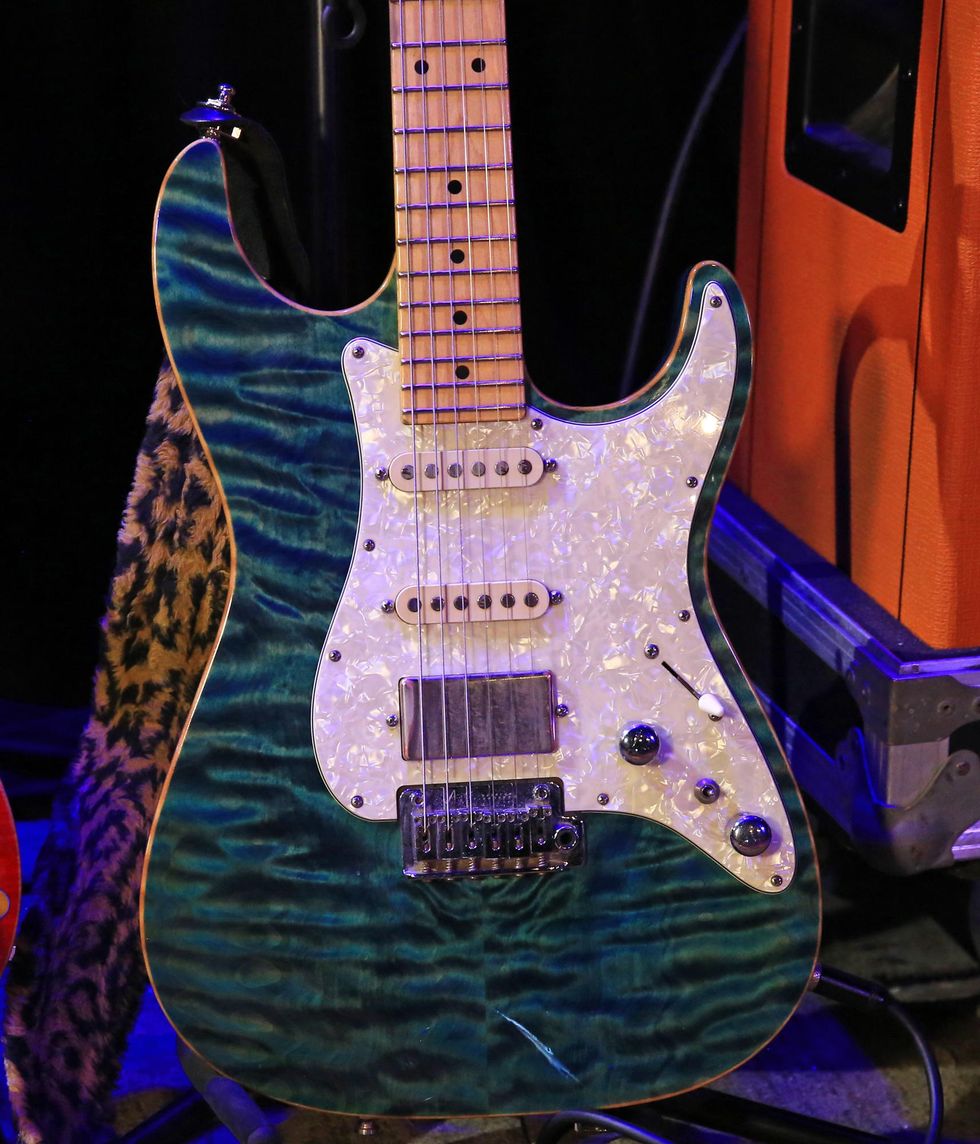
This is Wicklund’s main silence-killer: a Tom Anderson Drop Top Classic model with a wickedly striped finish. There’s a 5 db boost switch between the tone and volume controls, and the maple neck, with 22 jumbo frets, is slim and speedy. The instrument has a tremolo bridge, but Wicklund sometimes leaves the bar in the case.
Flaming T
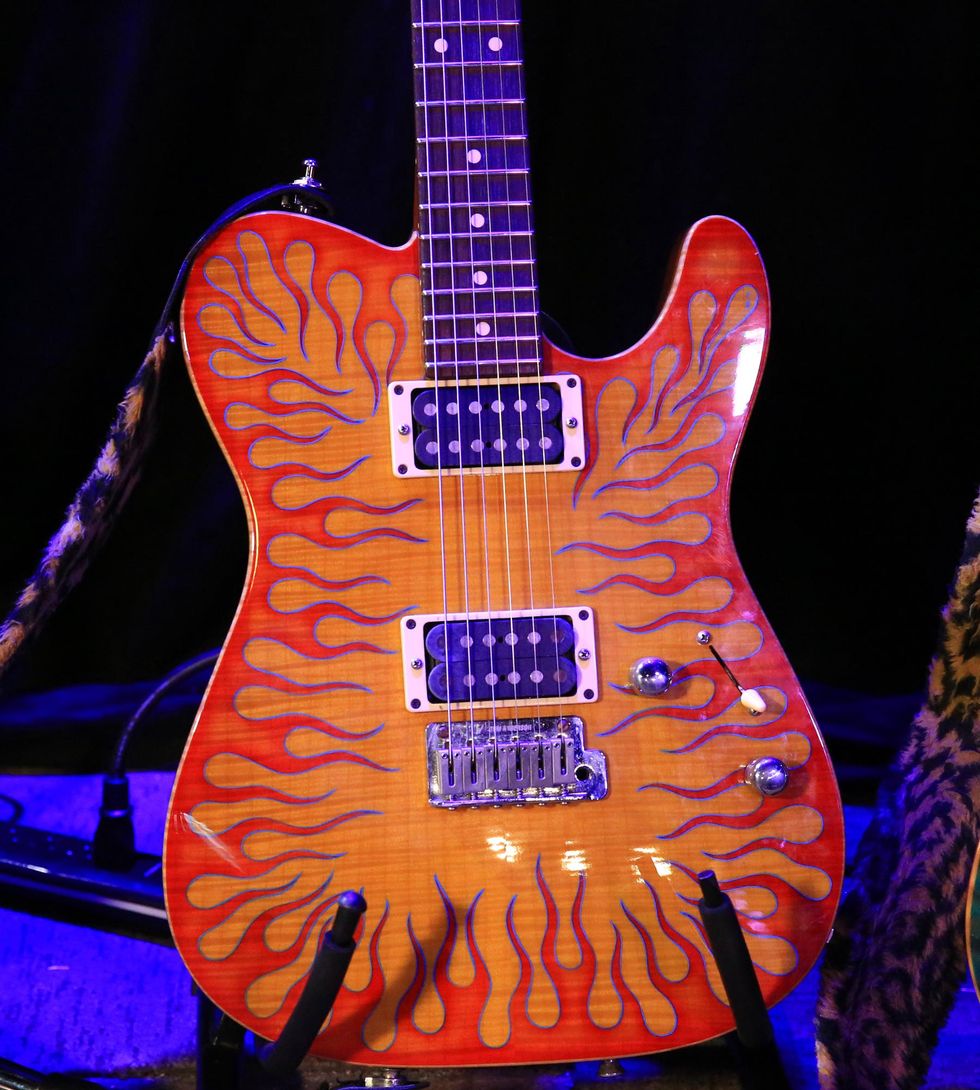
Her backup for the 3rd & Lindsley show was an Anderson Cobra T, with a single-cut mahogany body and a mahogany/rosewood neck of the same dimensions as her Angel. Wicklund says she finds both guitars fairly interchangeable, “but this one screams a little bit more,” with its double humbuckers. She also likes the contoured backs, for comfort. Her new, pink Anderson Raven model stayed home for this gig.
The Cobra’s Head
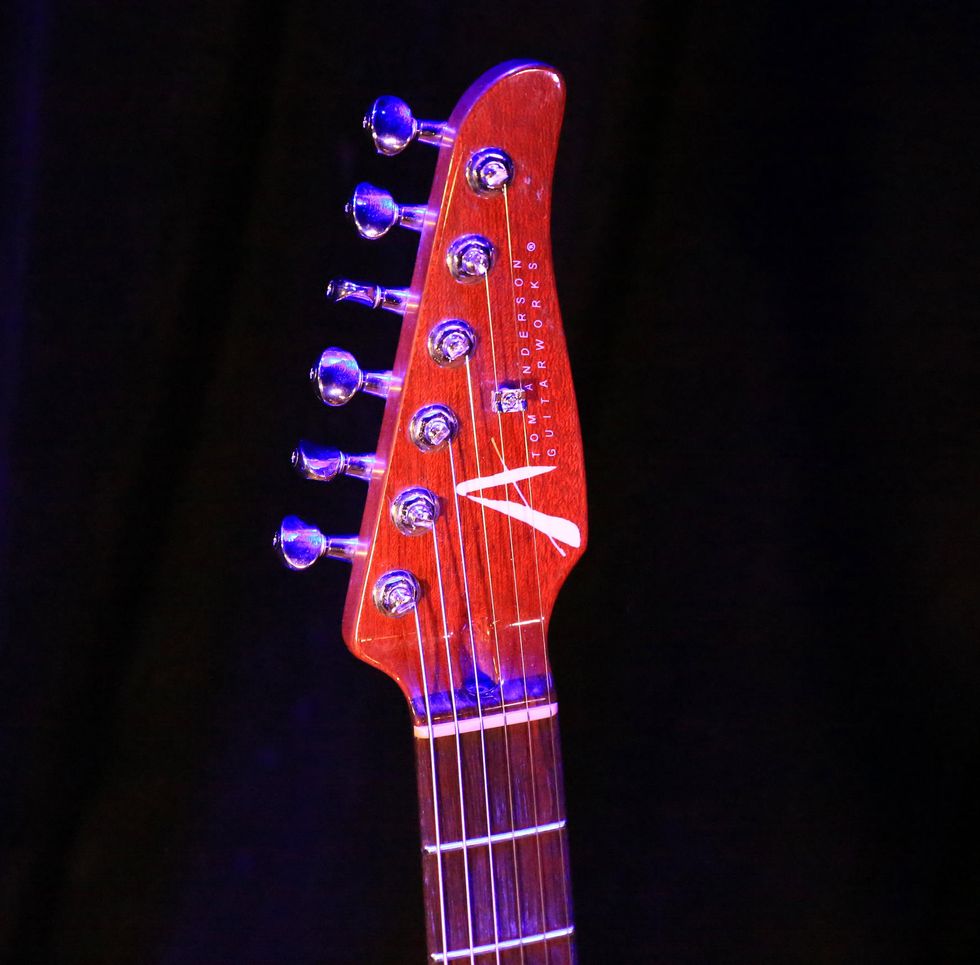
No fangs. Just an artful contour, 6 on a side, and a tastefully integrated blend of finish and logo.
All in the Family
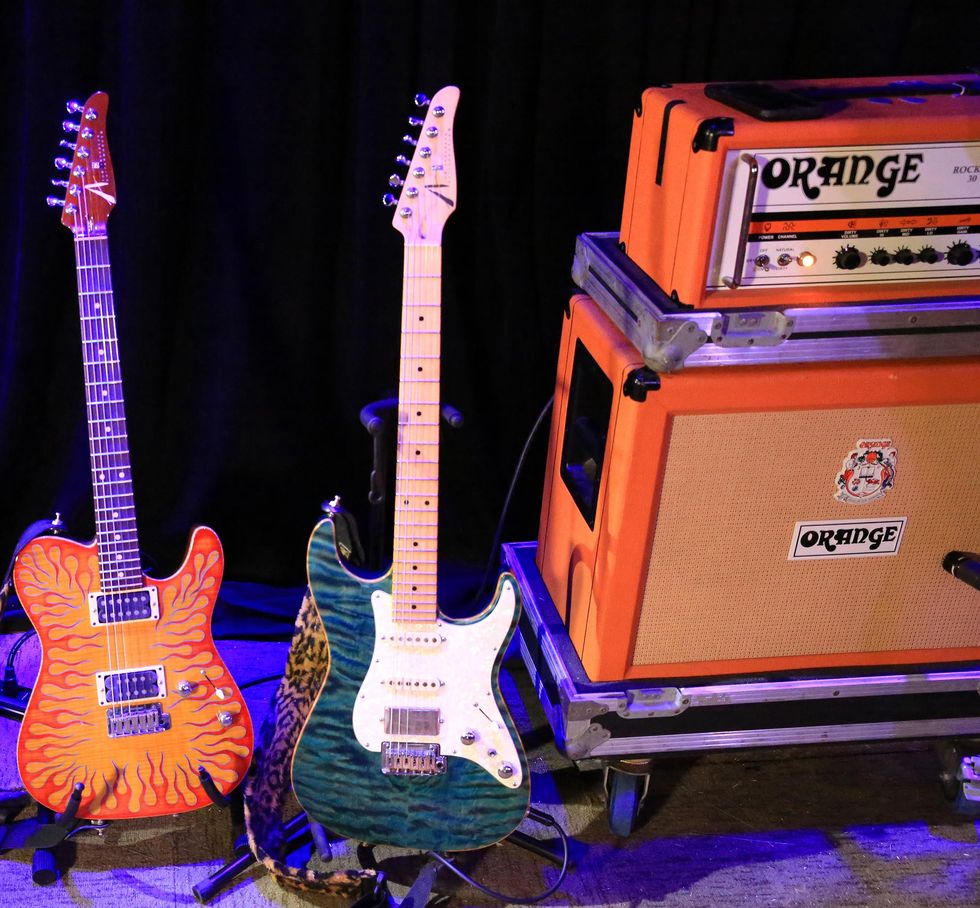
Here’s a look at the nucleus of Wicklund’s burly tones: her Tom Anderson Cobra T and Drop Top Classic, alongside her Orange Rocker 30 and 2x10 head.
It’s in the Wires
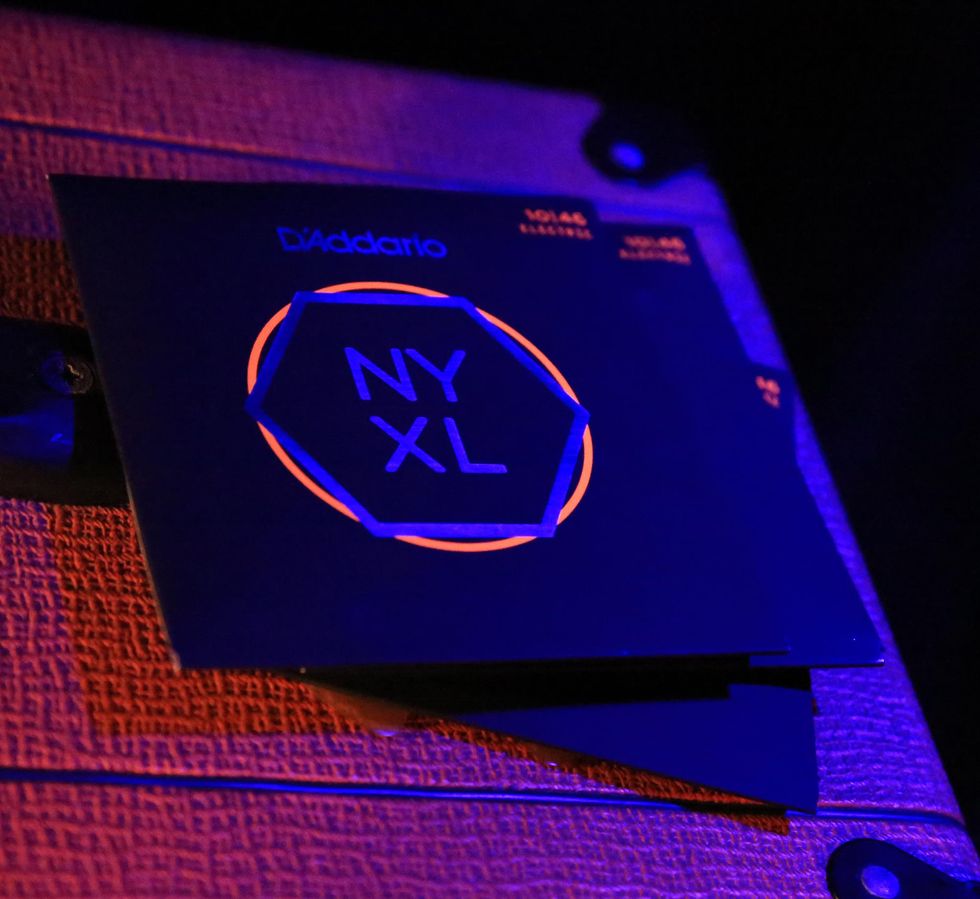
Her strings are D’Addario XL’s, gauged .011–.046.
House Rocker
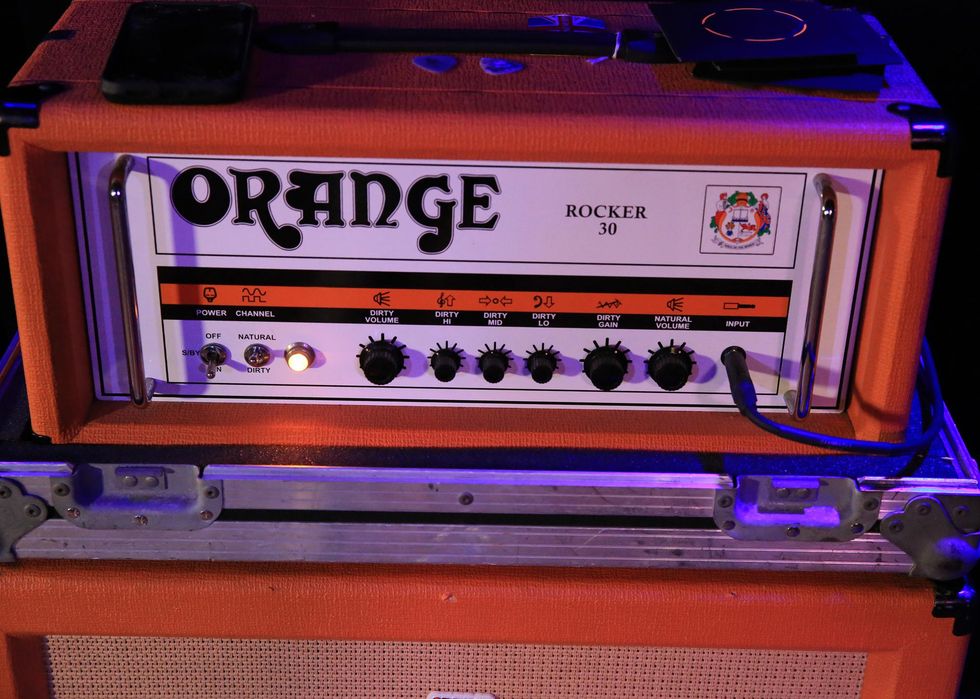
This Rocker 30 head replaced a Rock 30 combo Wicklund had relied on but was mothballed when she decided she wanted the bigger blast and versatility of switching between 2x12 and 4x12 cabinets. Her settings: dirty volume at 11 o’clock , dirty hi at 10, dirty mid nearly at noon, dirty low nearly at 1, dirty gain at 1 o’clock, and natural volume at 1 o’clock.
Head and Shoulders
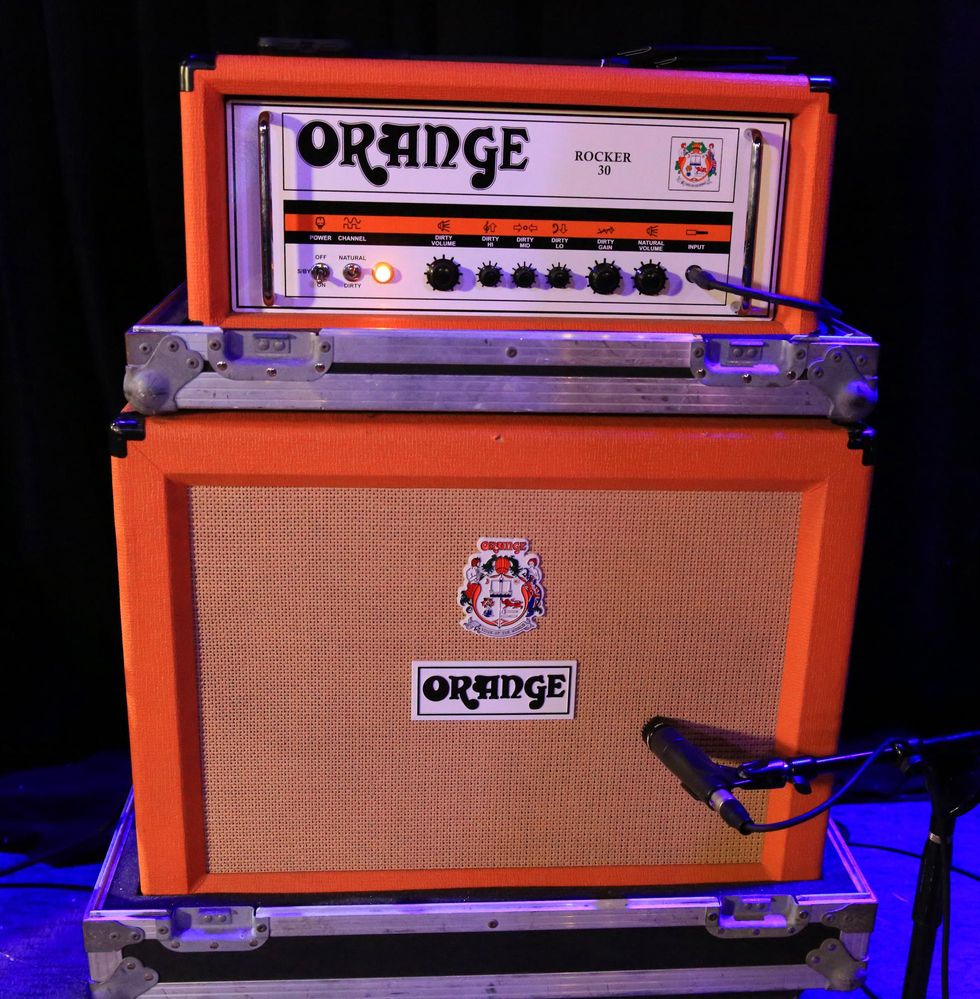
Here’s the head and cab. The cabinet has two 10" Celestion speakers and is open-backed. She also has a closed-back version.
All Aboard
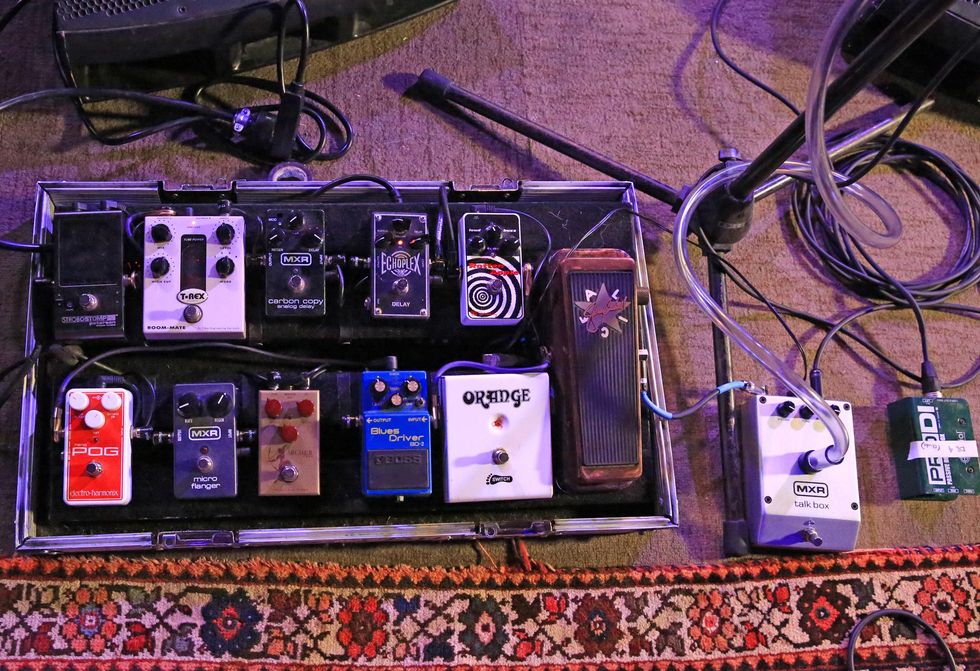
Wicklund’s pedalboard is stacked for knuckle-bruising. Once the signal gets past her MXR Talk Box and Dunlop JC95 Jerry Cantrell Signature Cry Baby, it hits the channel switch for her Orange head. That stays in overdrive mode for about 75 percent of her set, which she says gives her sound its grizzly-bear lows. Next up is a classic—a Boss BD-2 Blues Driver. But this one has a Robert Keeley mod that adds to and opens up the low end, and keeps mids and highs better defined. Wicklund is especially fond of deploying the BD-2 with some atmospheric help from her Dunlop EP103 Echoplex Delay on her song “Ghost.” Next, a J. Rockett Archer—one of the hardest working Klon clones in show business. She matches it with the Blues Driver for singing, biting solos. There’s also an MXR Micro Flanger and an Electro-Harmonix POG, which lend a very cool high overtone to bends. Since the Orange 30 is a ’verb-less head, Wicklund uses a T. Rex House Mate Tube Reverb pedal, which she keeps on a hall setting, situated next to her Peterson StroboStomp HD. You want more? There’s also an MXR Carbon Copy Analog Delay and a Keeley Rotten Apple op-amp fuzz pedal.
BD Eyes
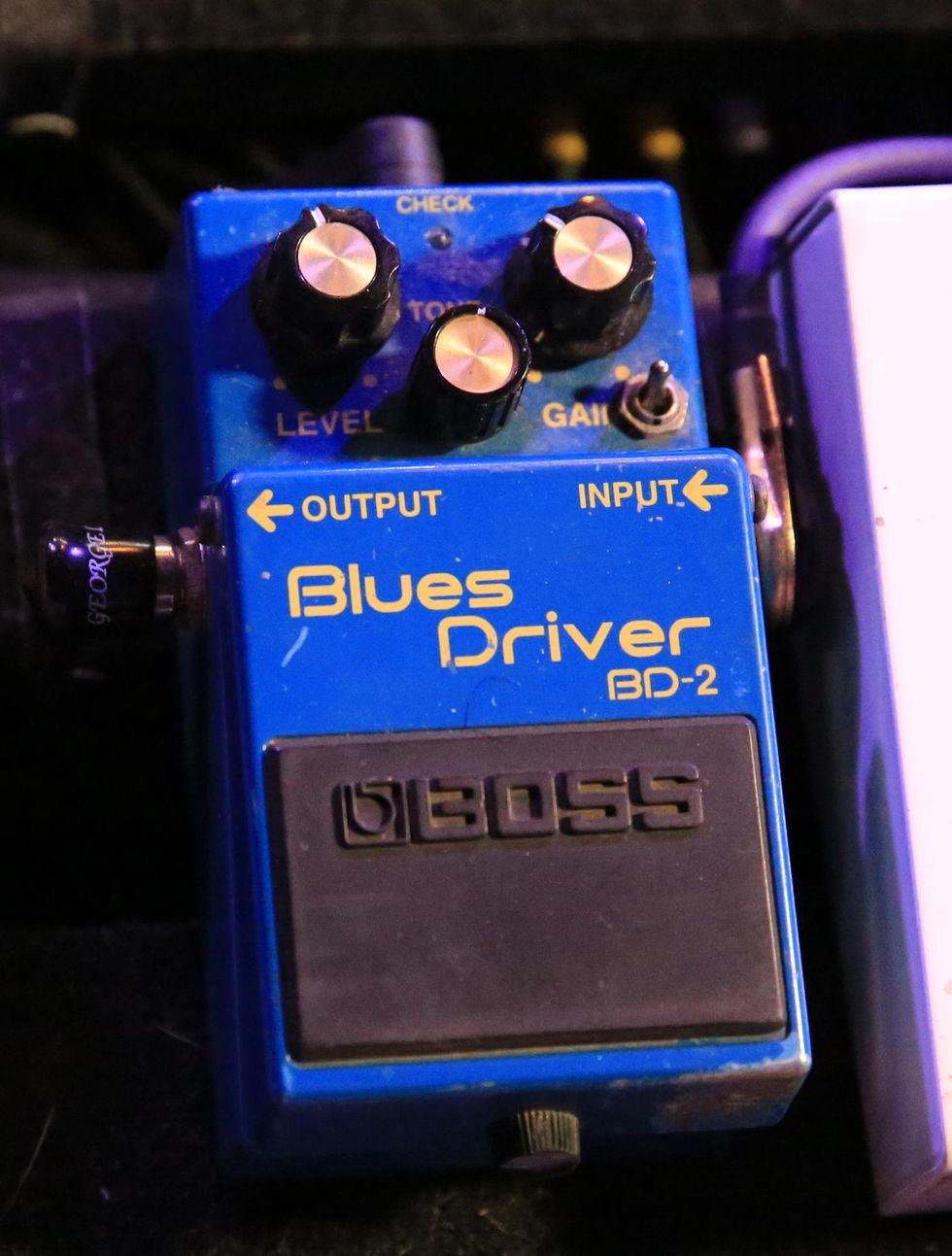
Take a look at the lower right corner of the control section. That’s the toggle that activates the Keeley mod.
Guitar Talk
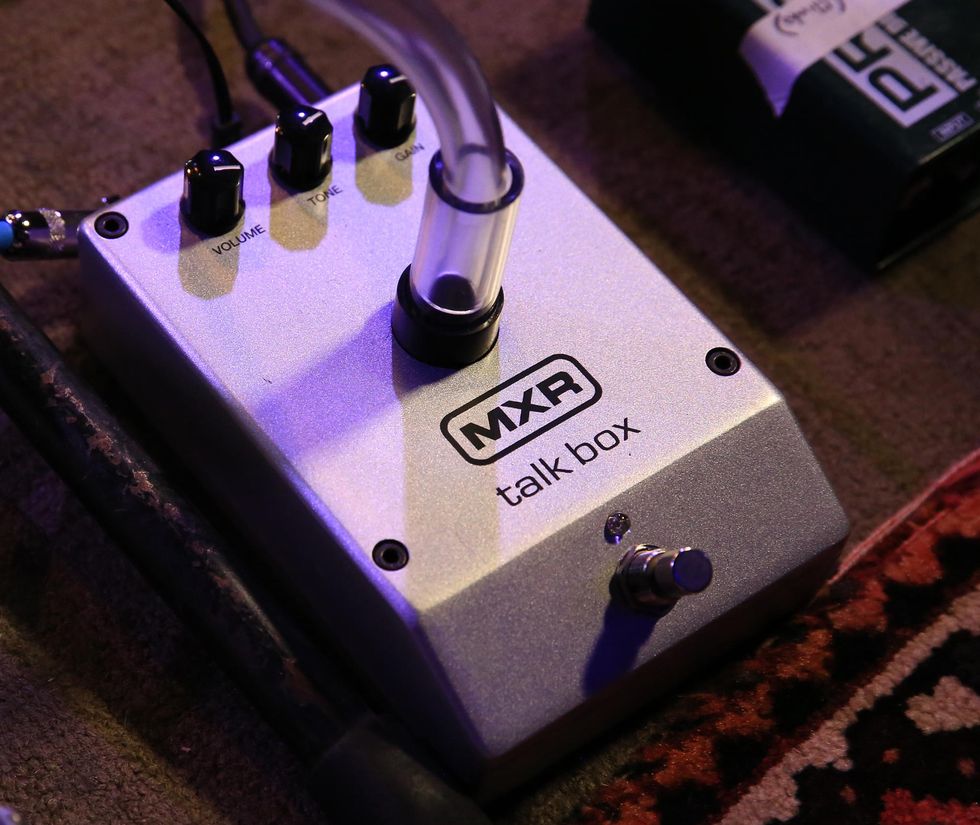
Oh! And back to that Talk Box. Here’s a close-up view of this classic device that is making a resurgence among psyche-retro-delic players. Wicklund really lays into the talker, turning heads with its gritty, warbling, lung-driven tones. In her early years onstage, playing in a classic rock cover band, she used the pedal to chase the signatures of Joe Walsh, Peter Frampton, Jeff Beck, and other notable Talk Box users.


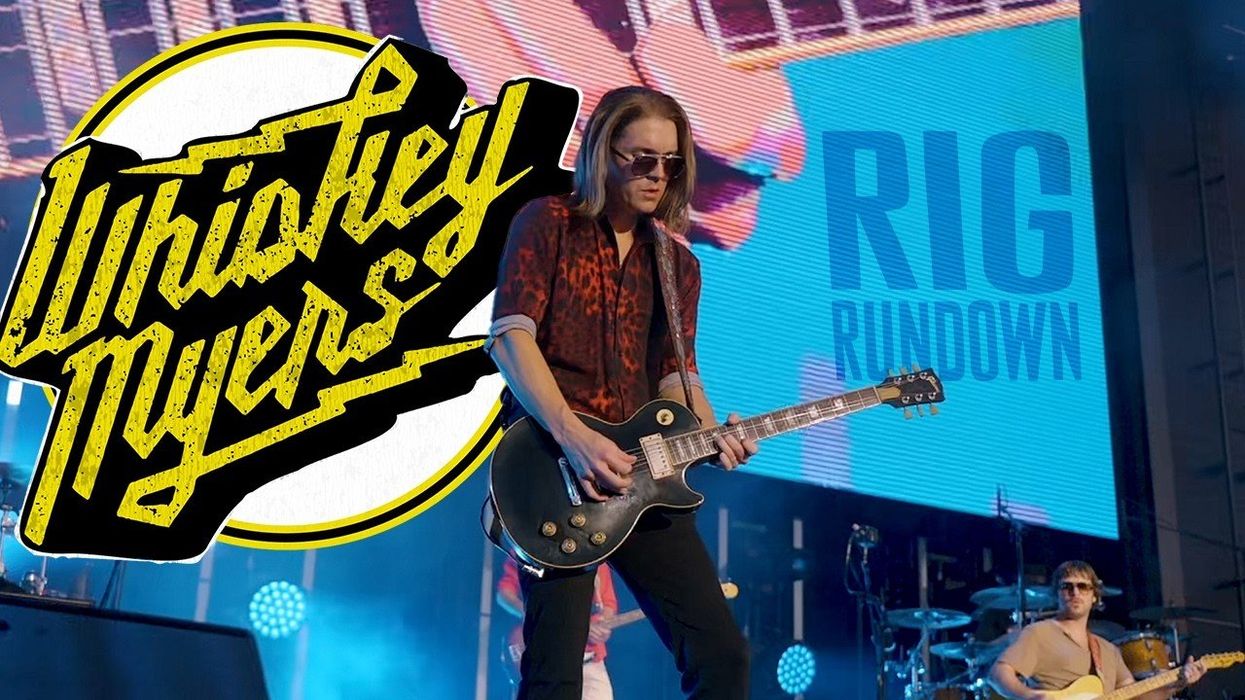







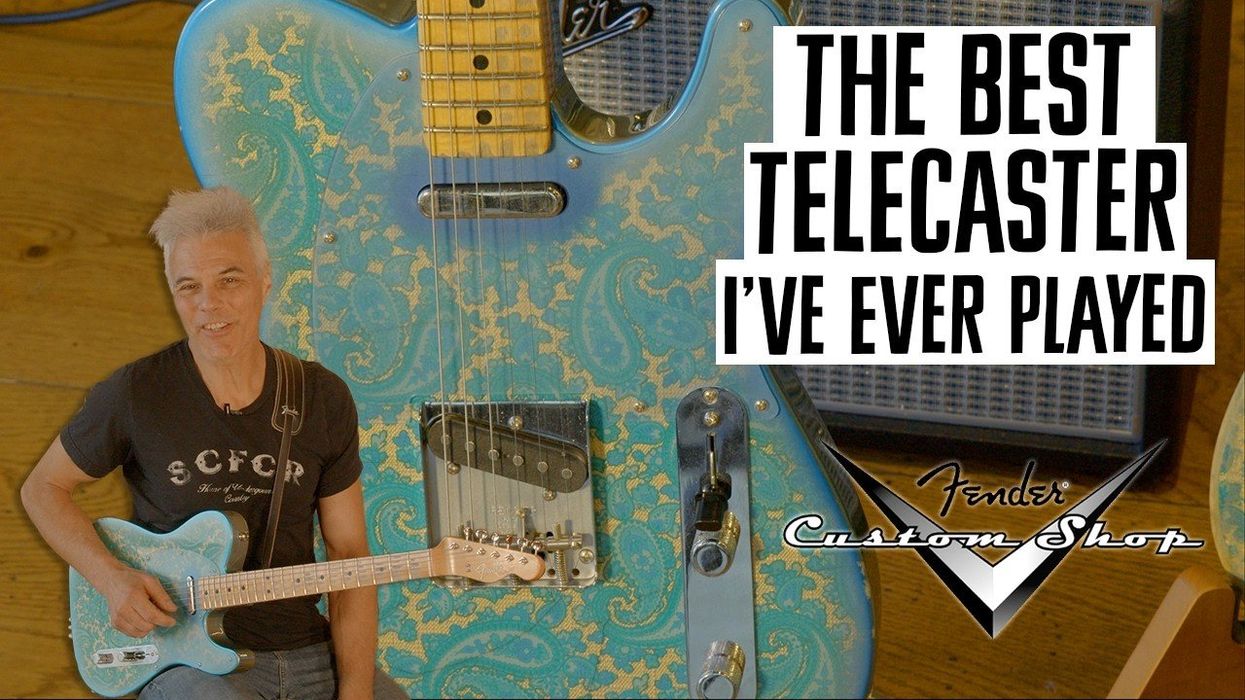

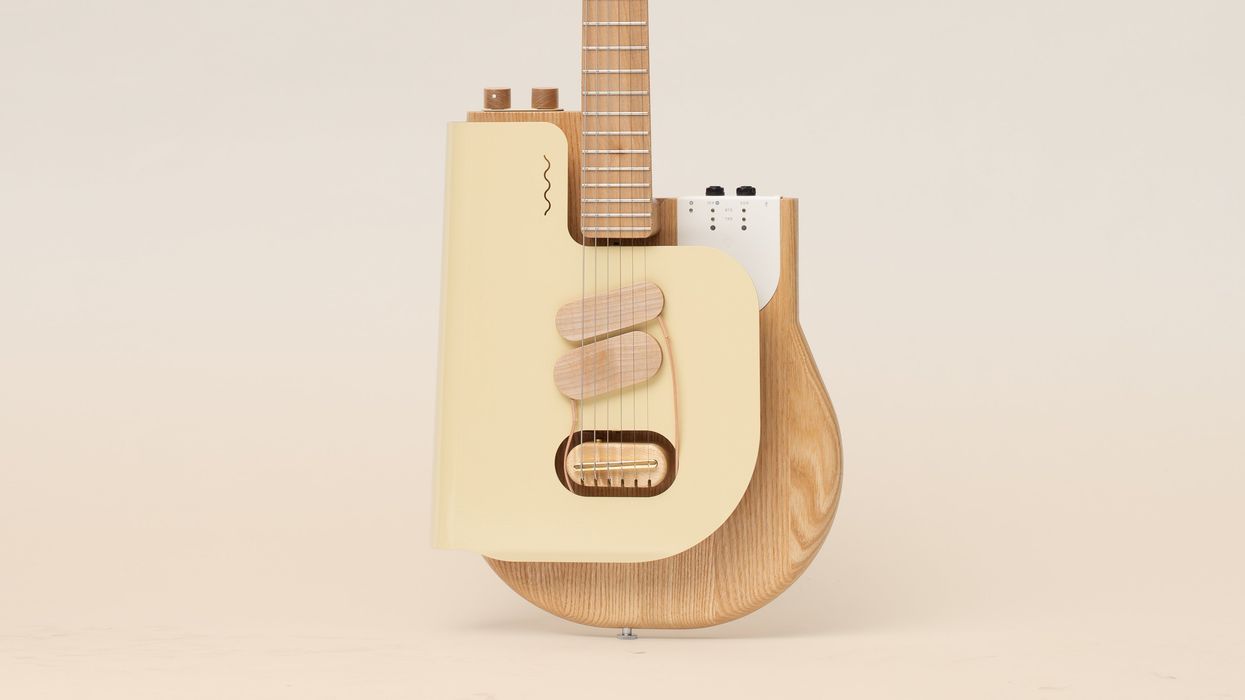
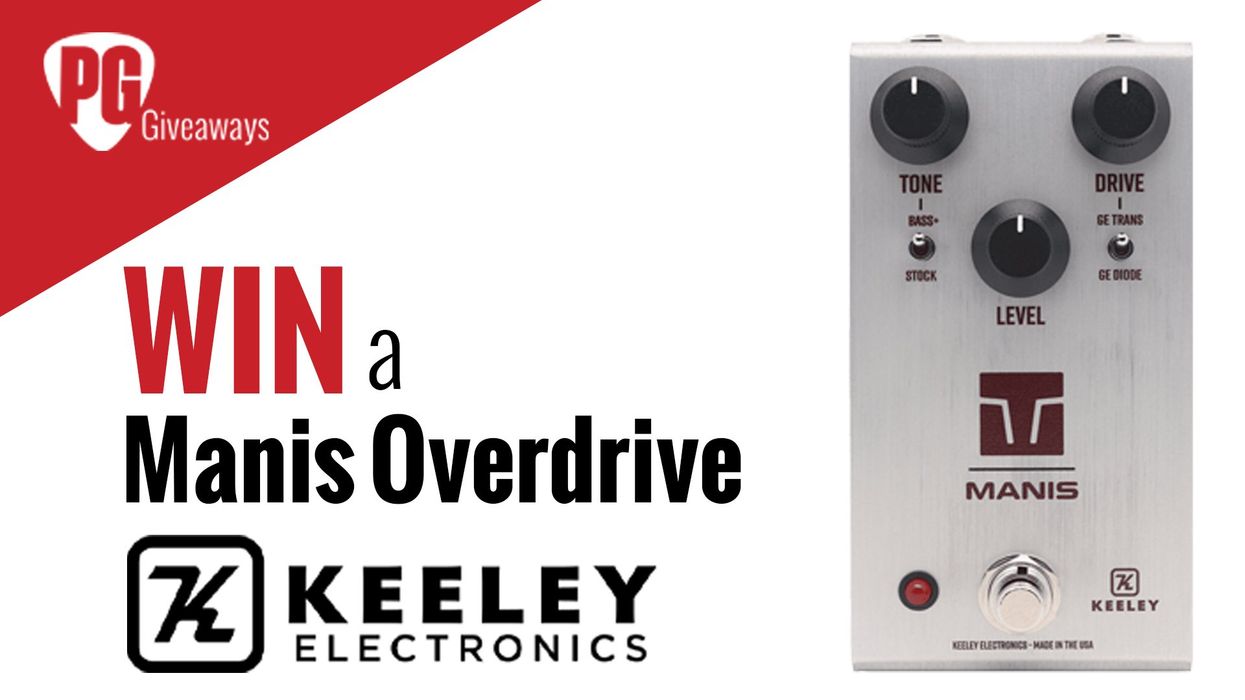
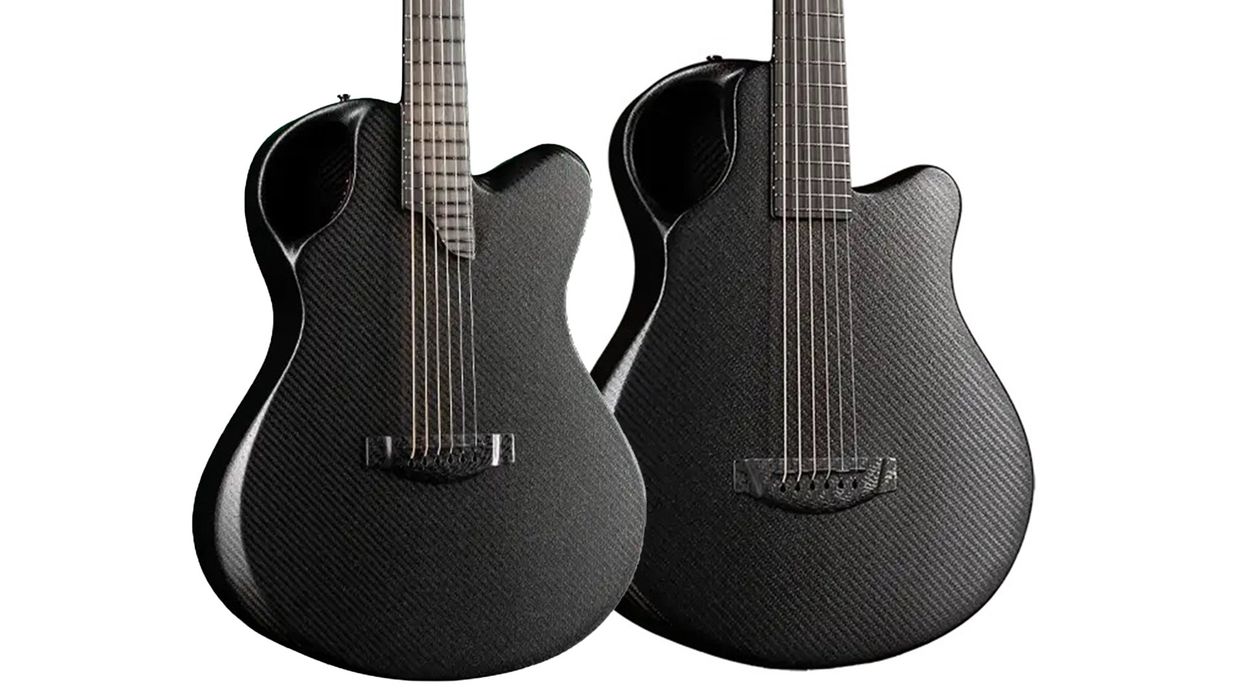
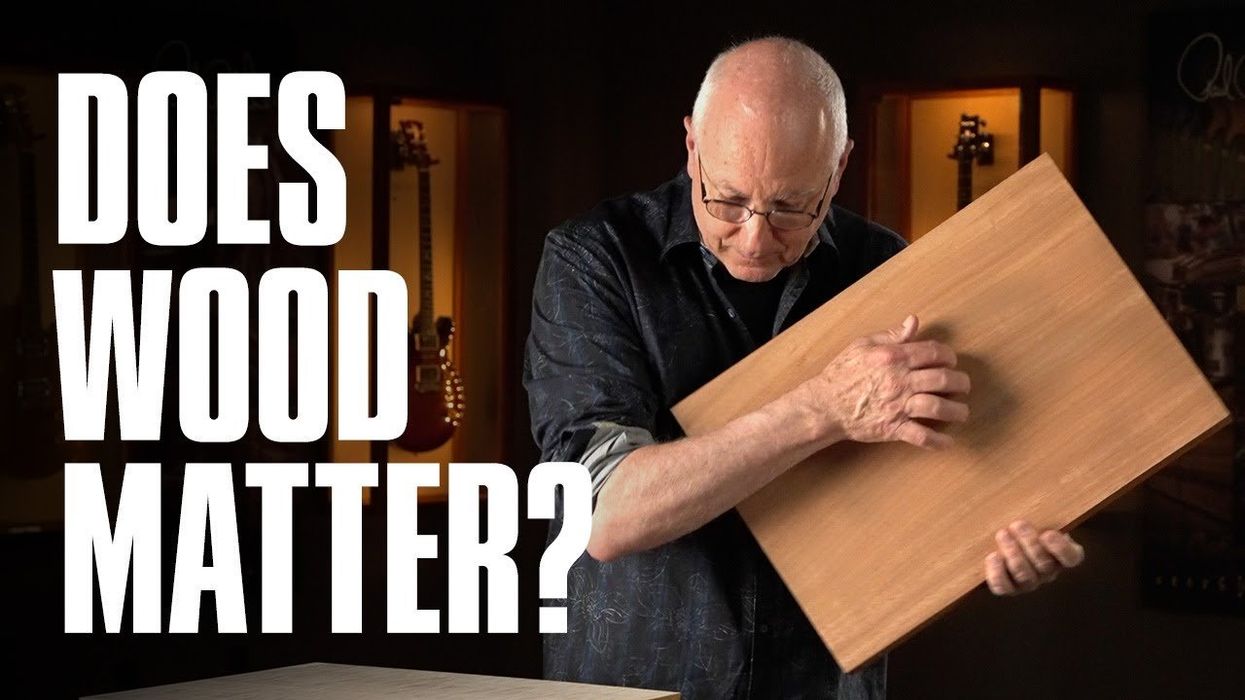
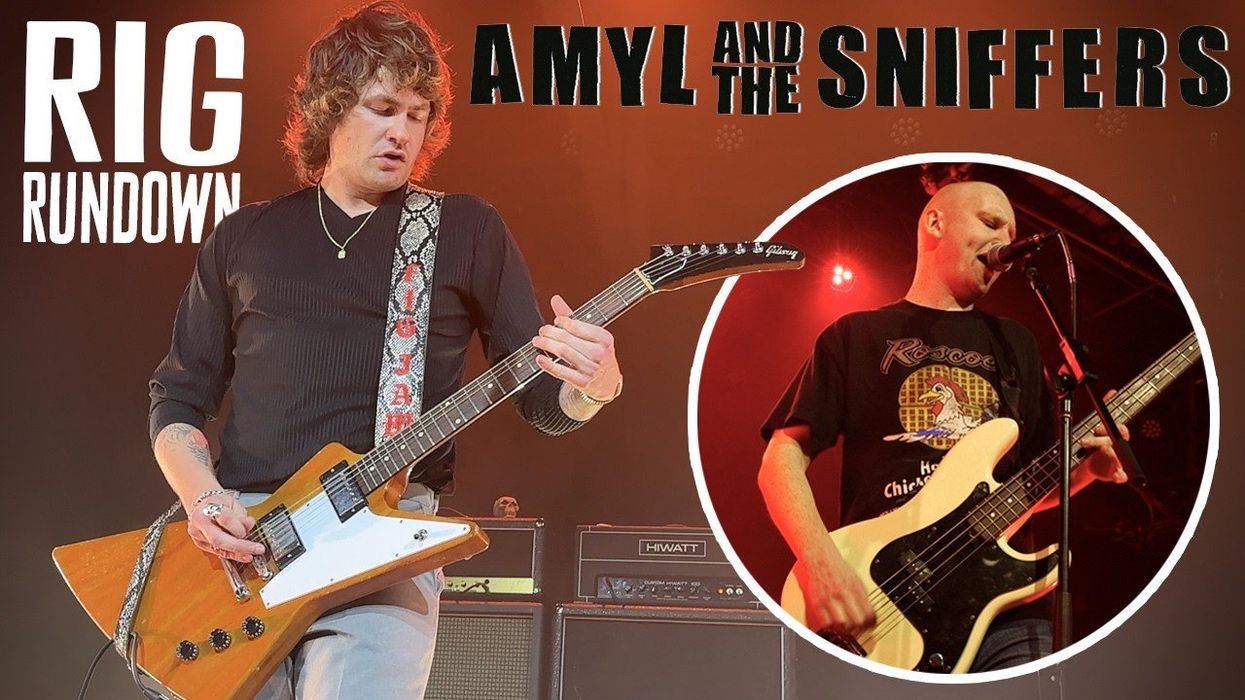
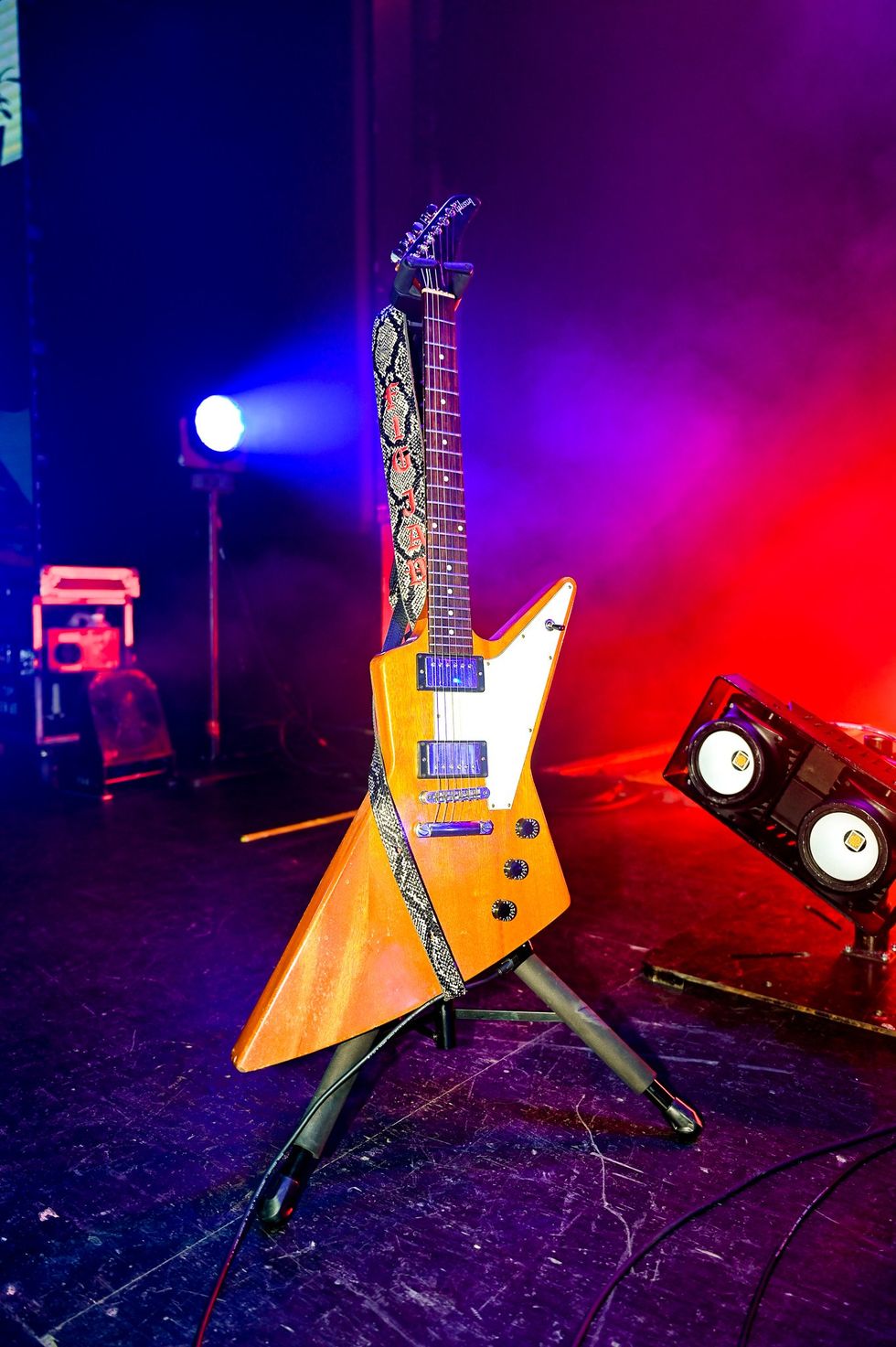
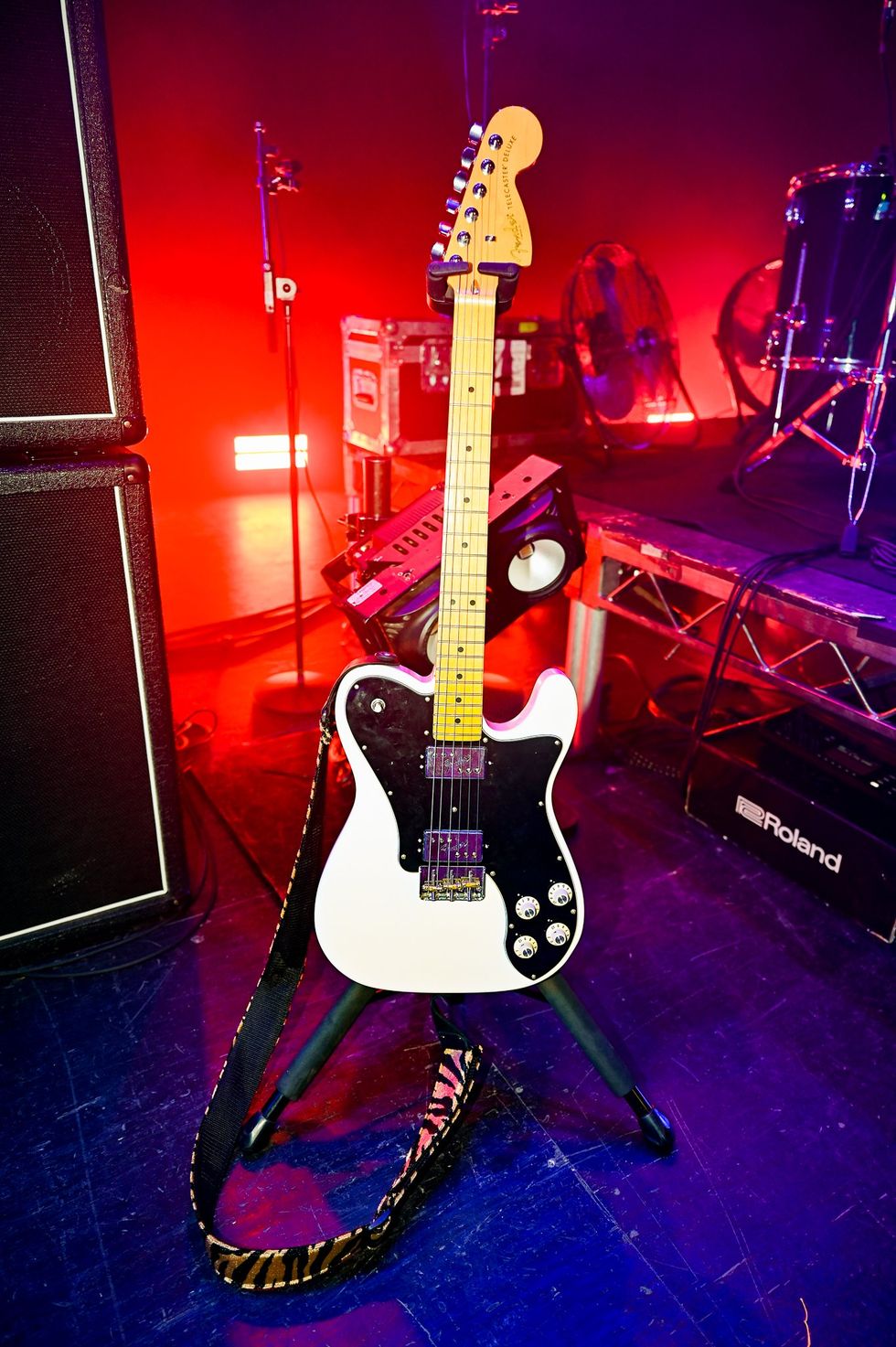
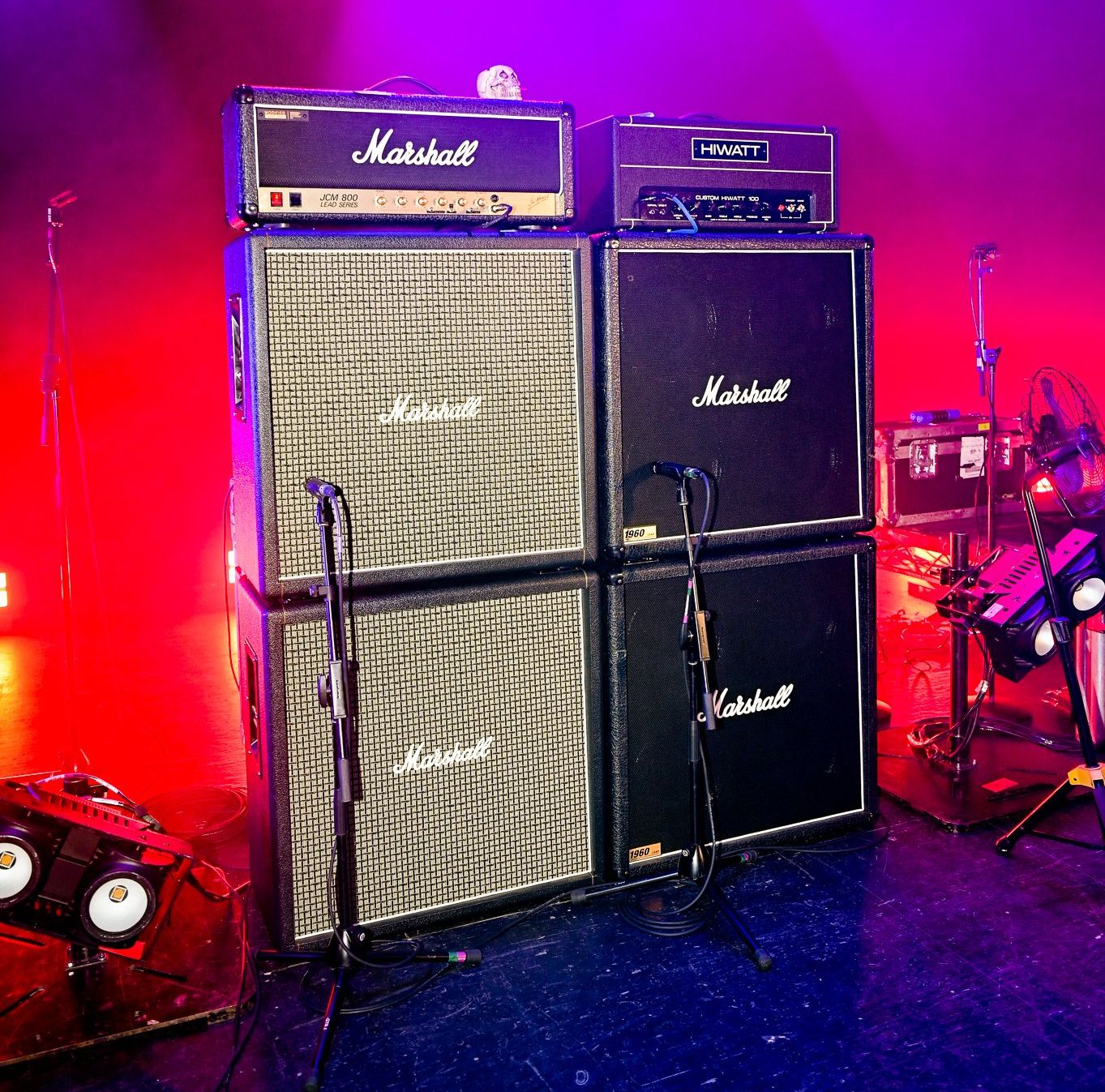
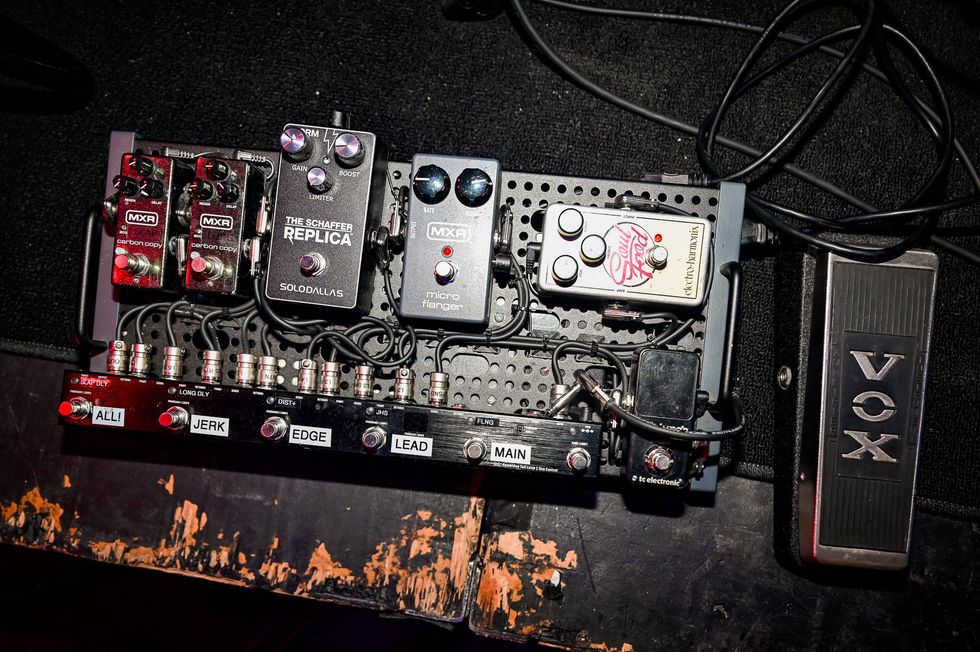
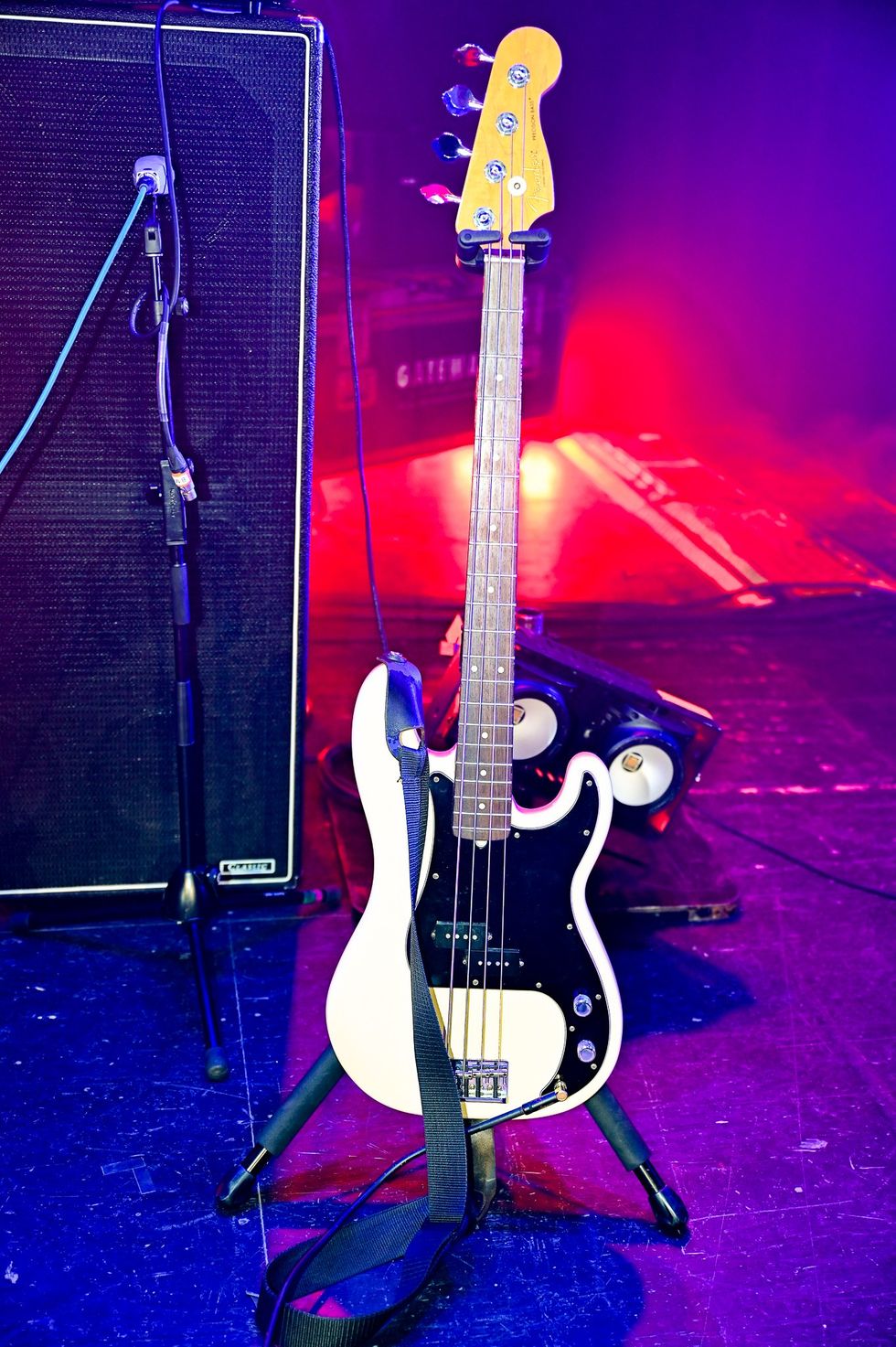
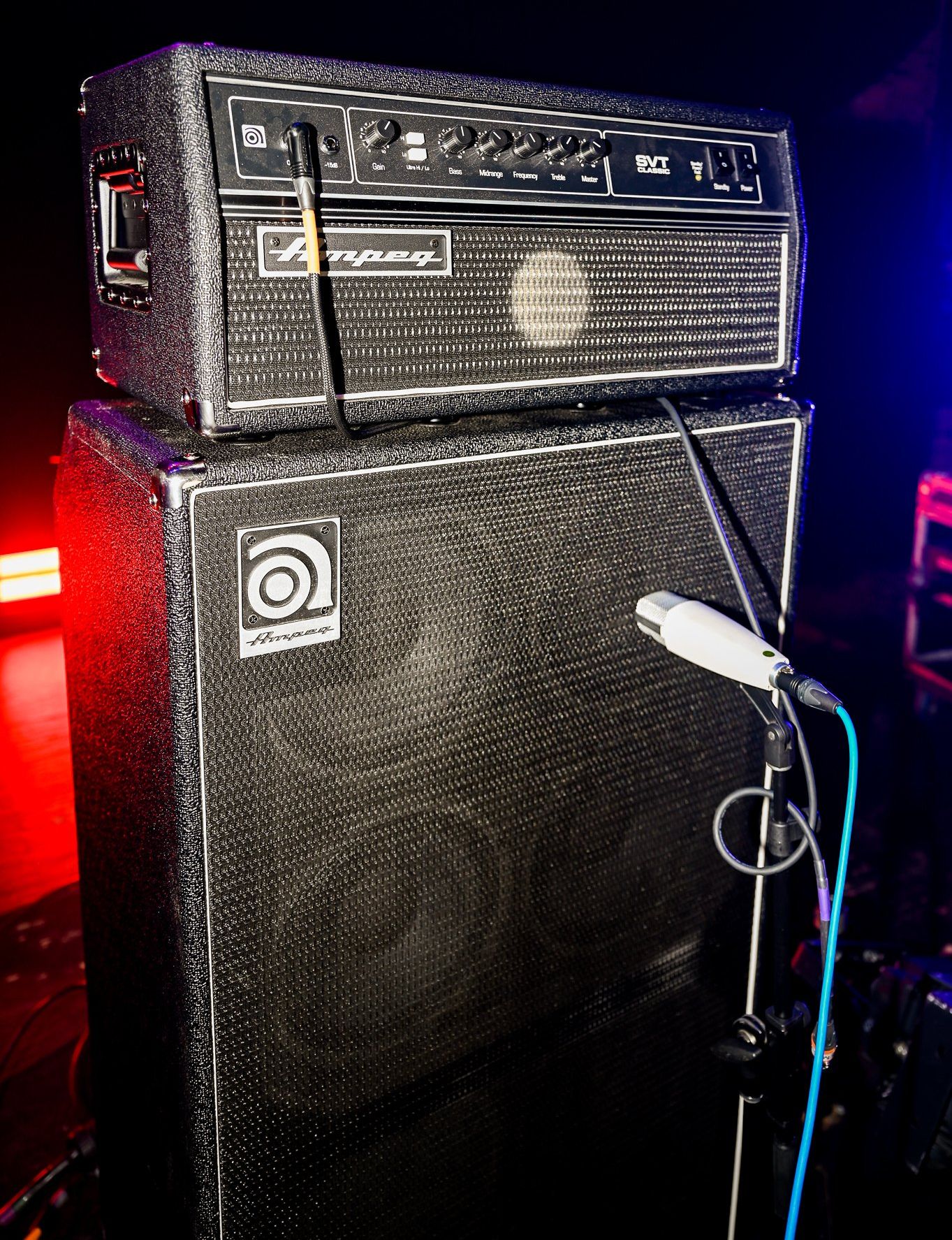
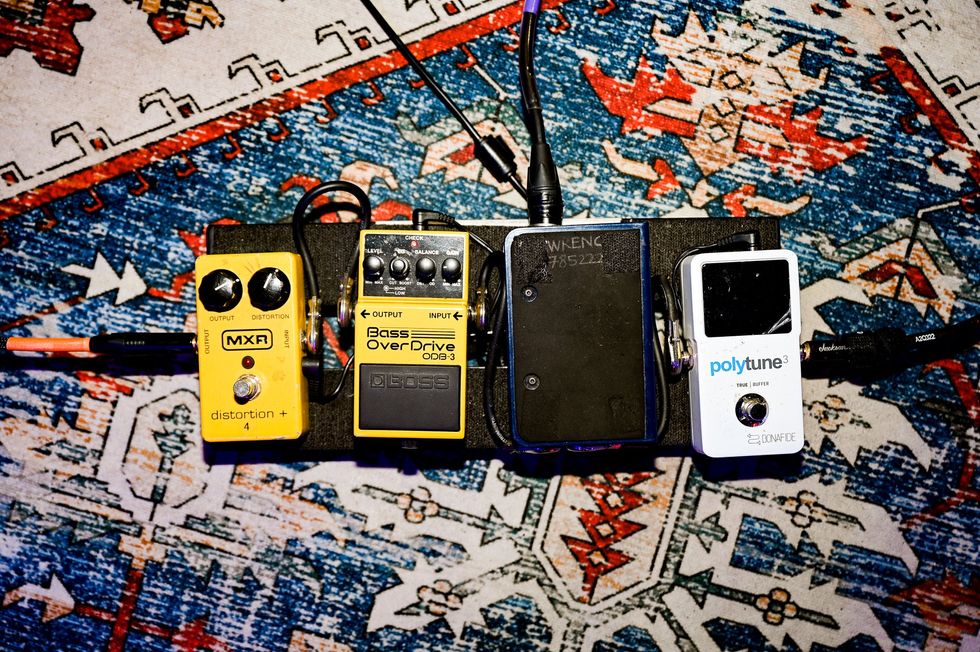

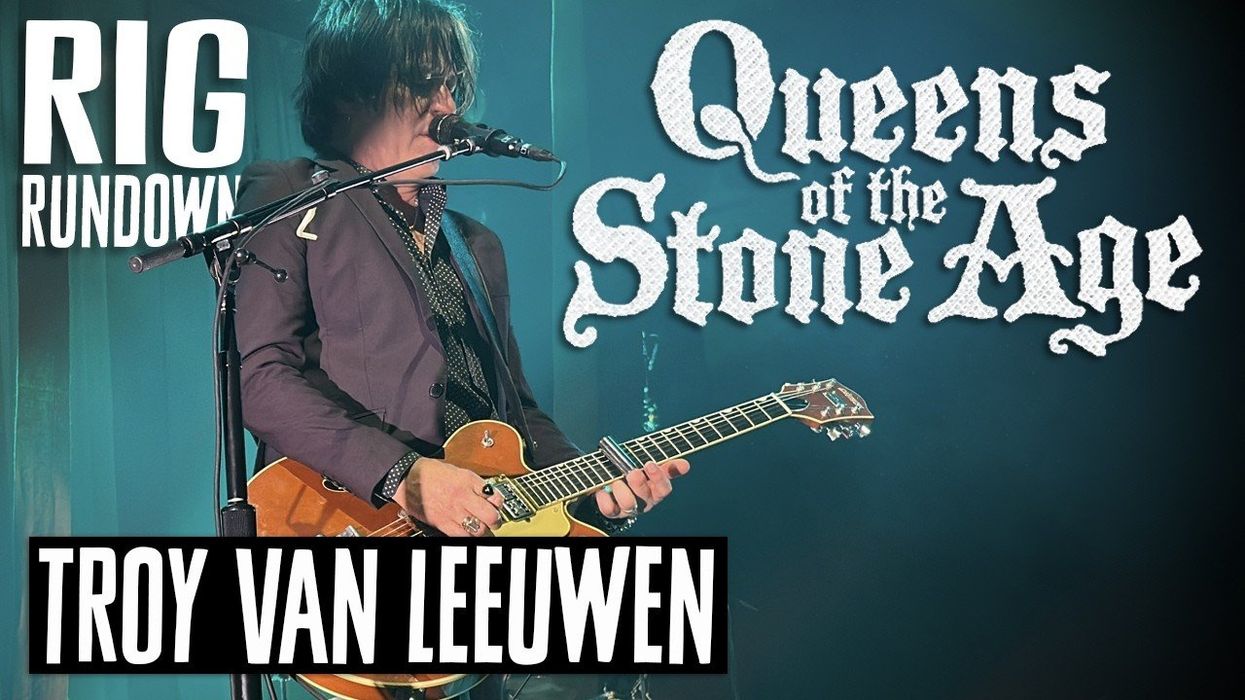
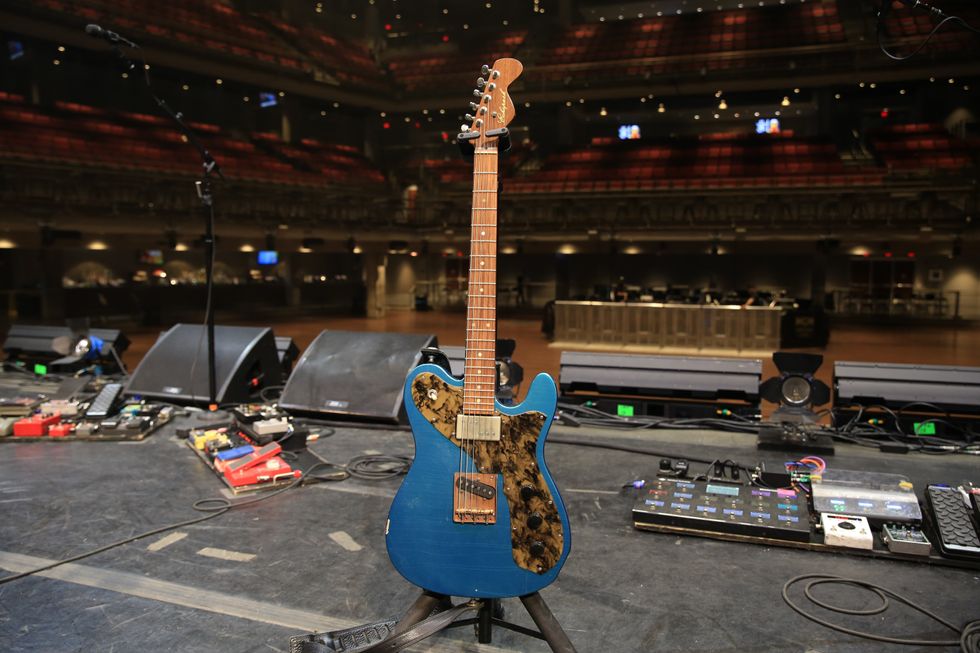 Echopark Shark
Echopark Shark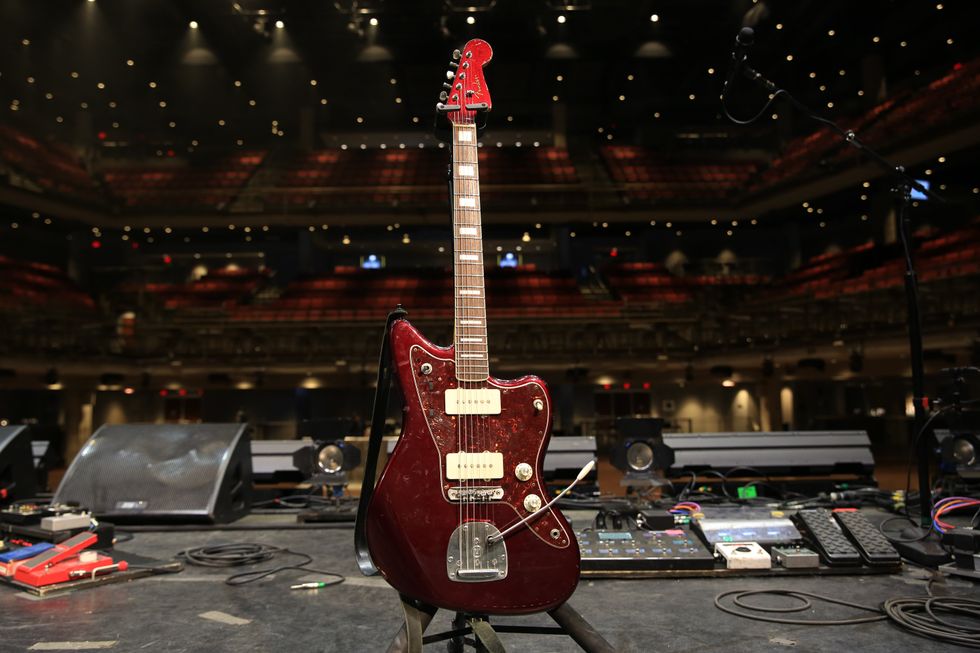 TVL’s RIY (Relic It Yourself)
TVL’s RIY (Relic It Yourself)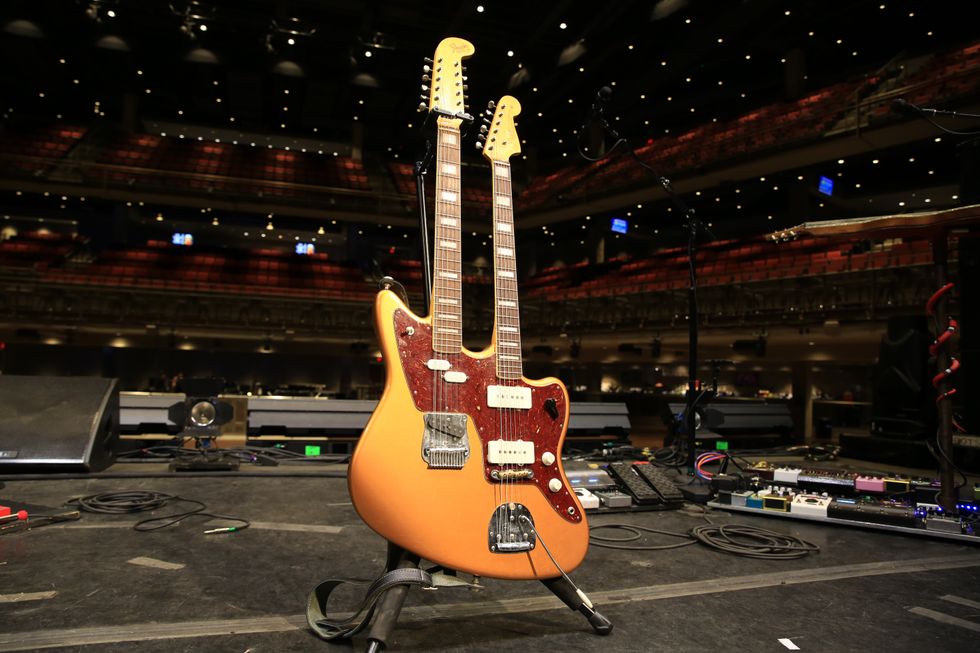 Double the Jazz
Double the Jazz